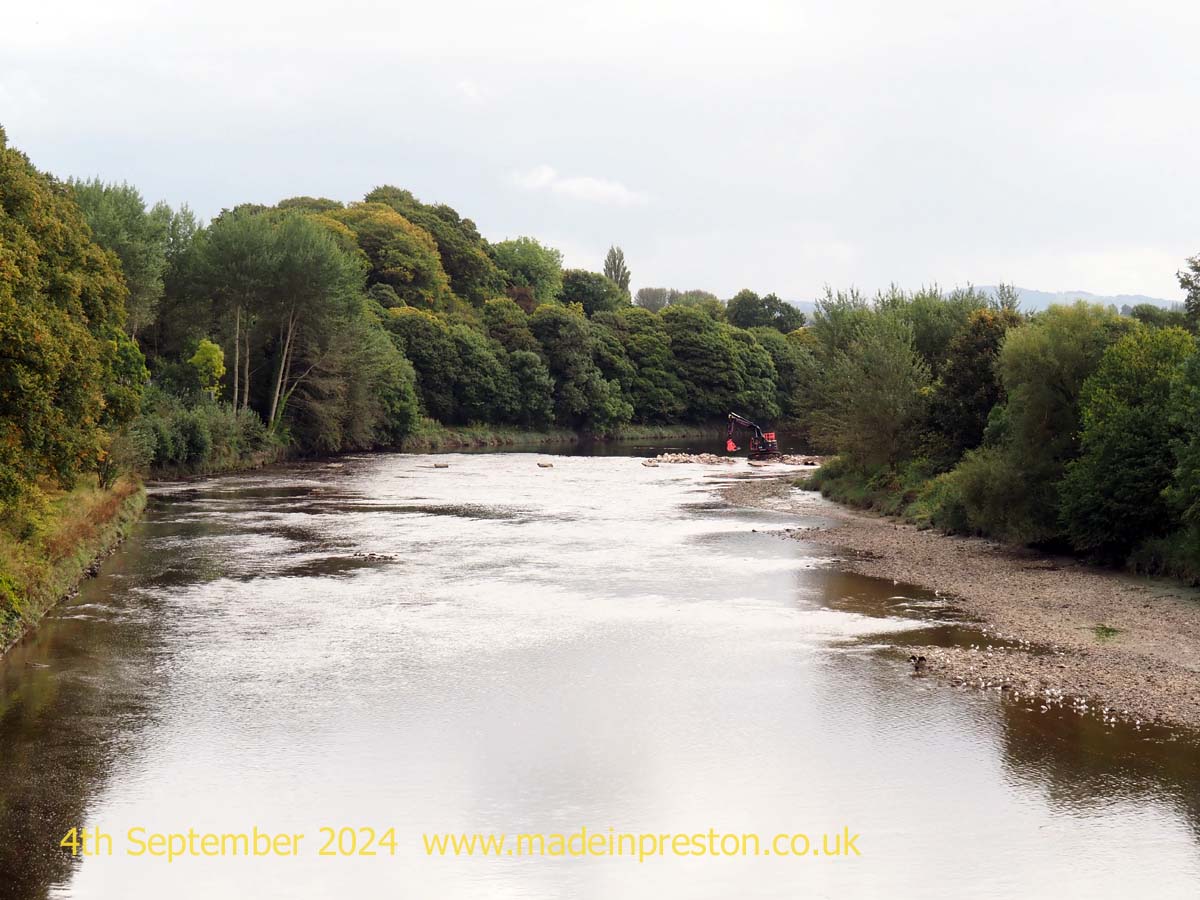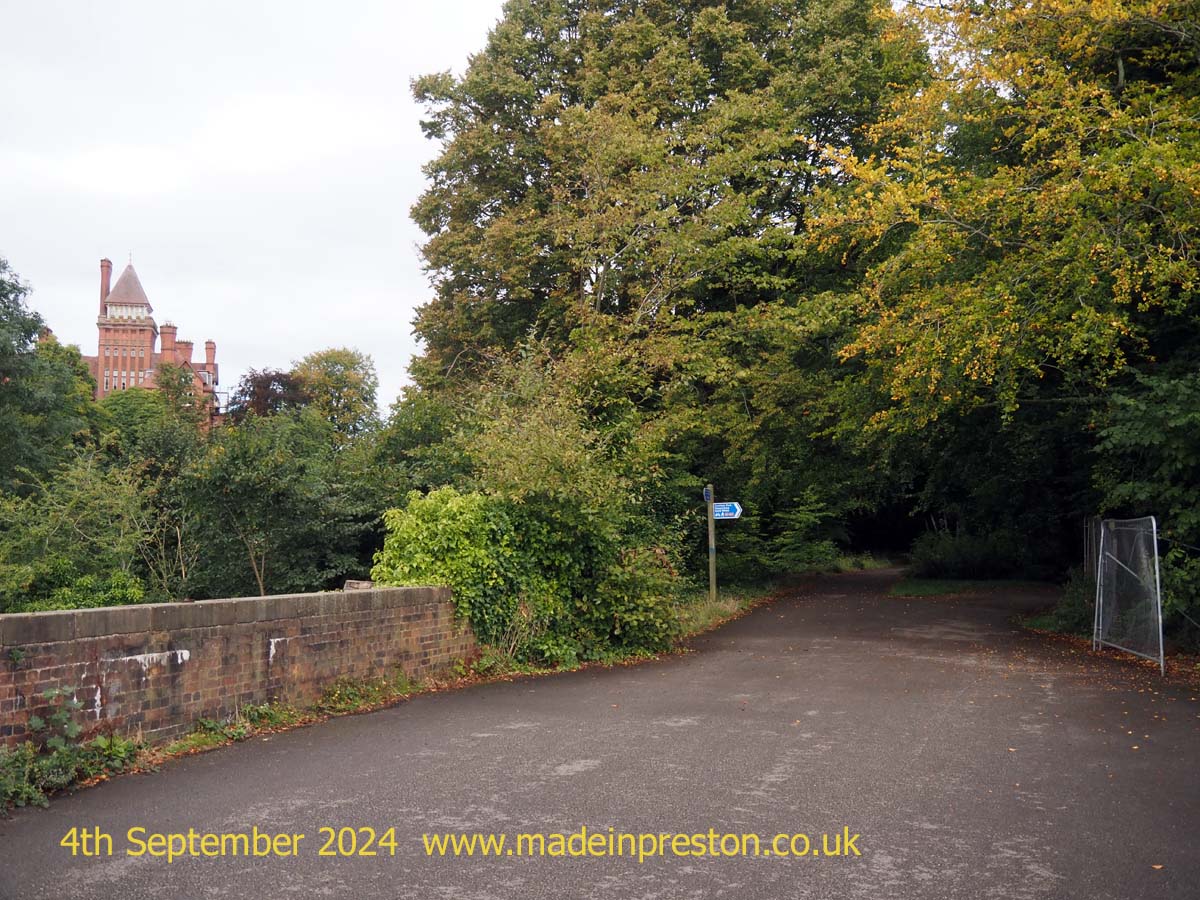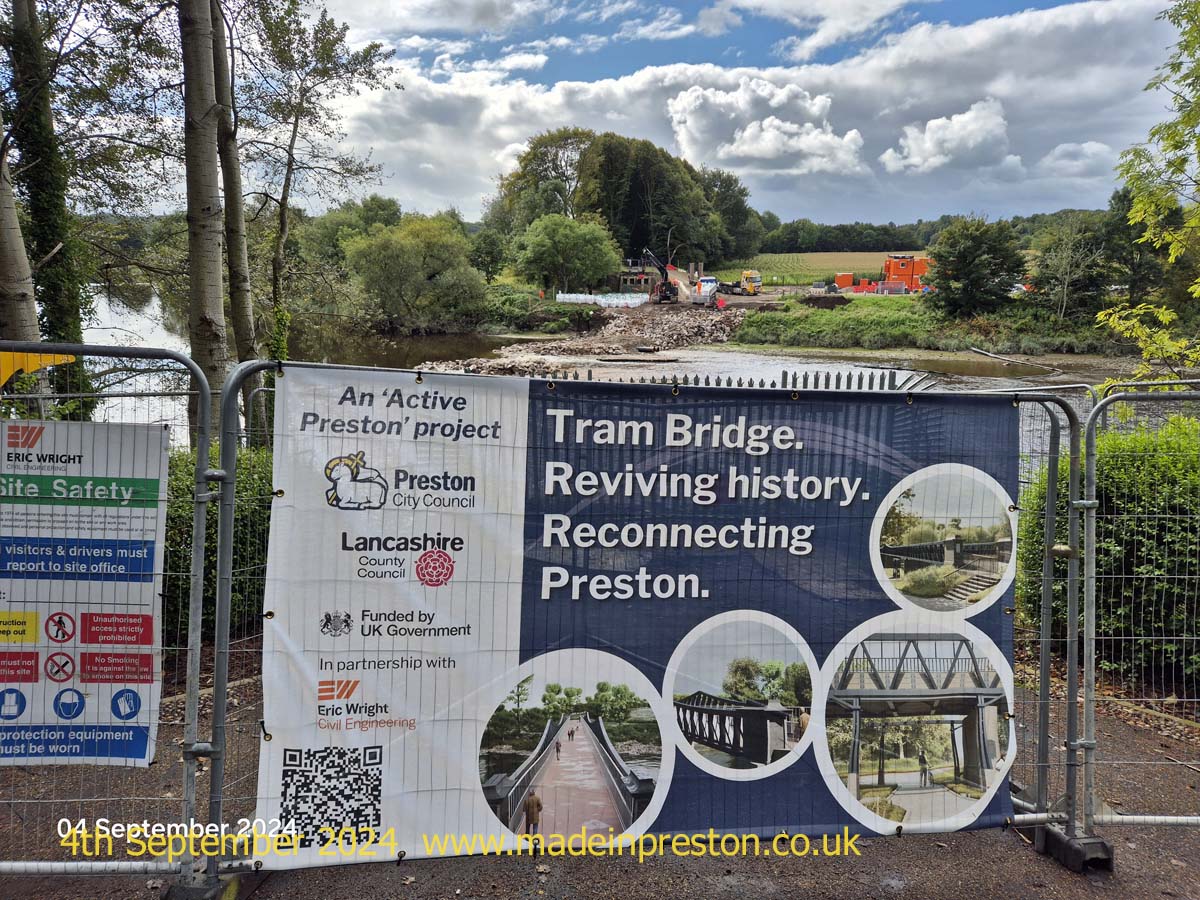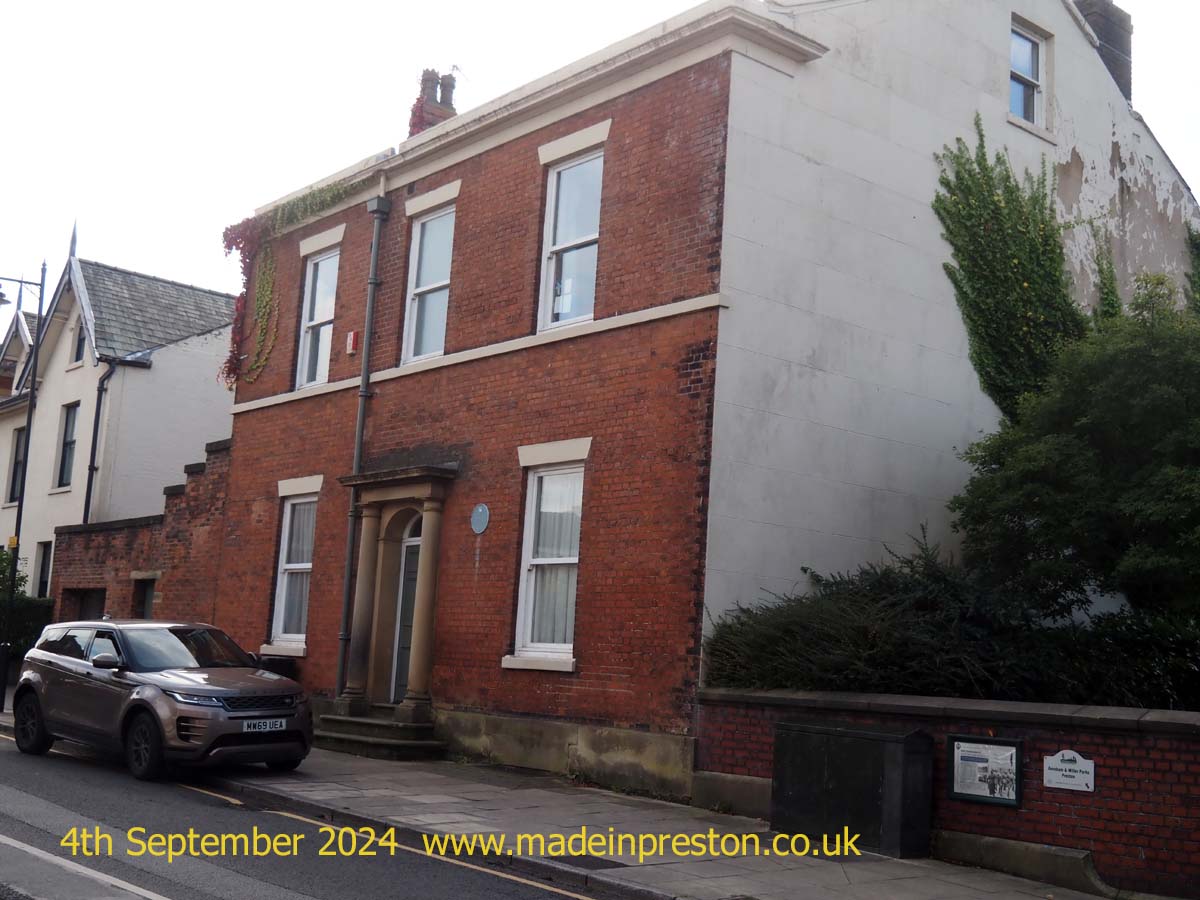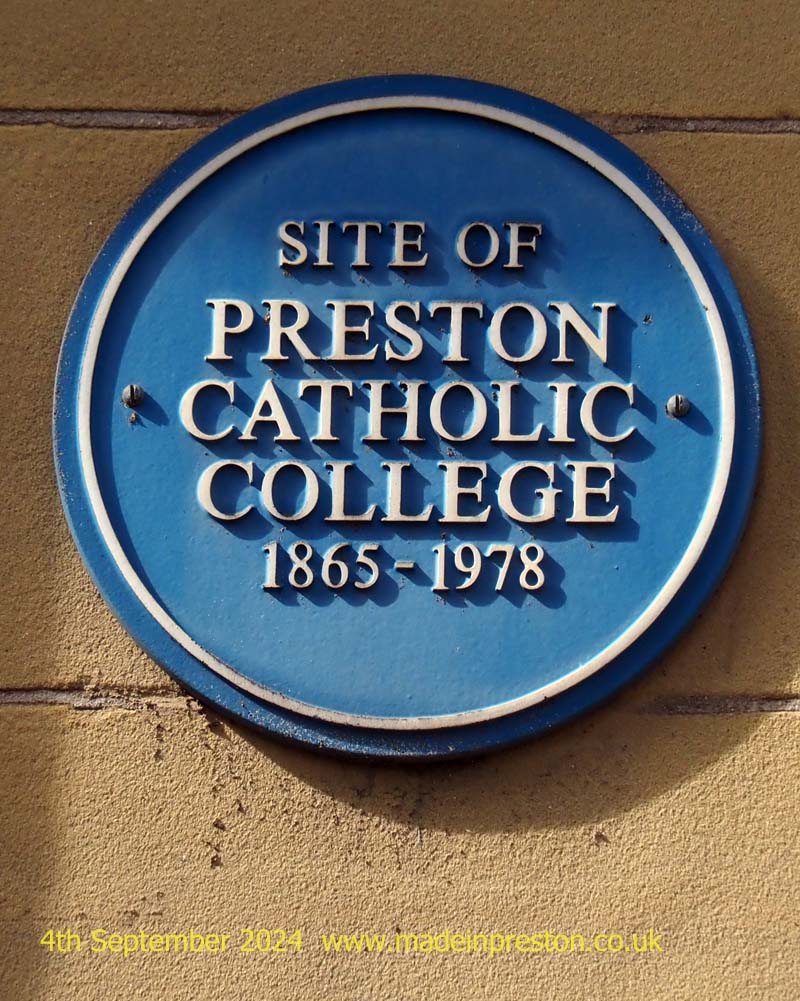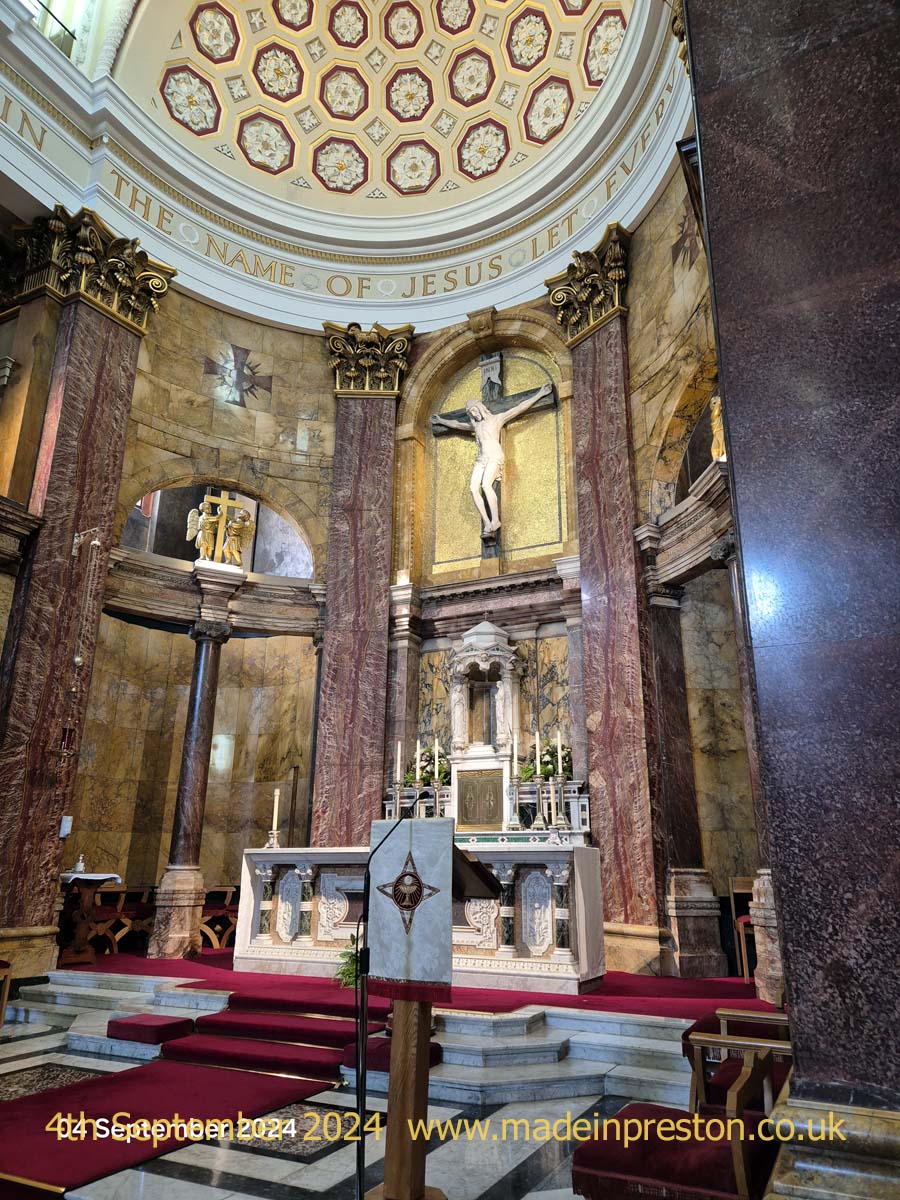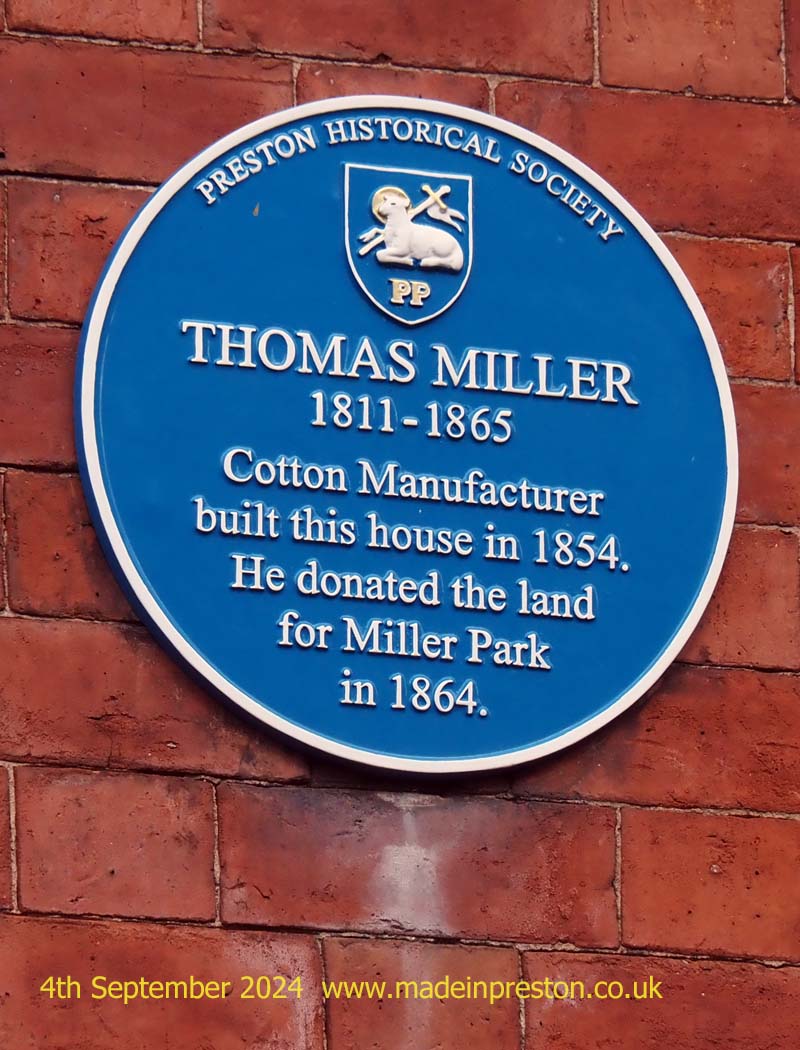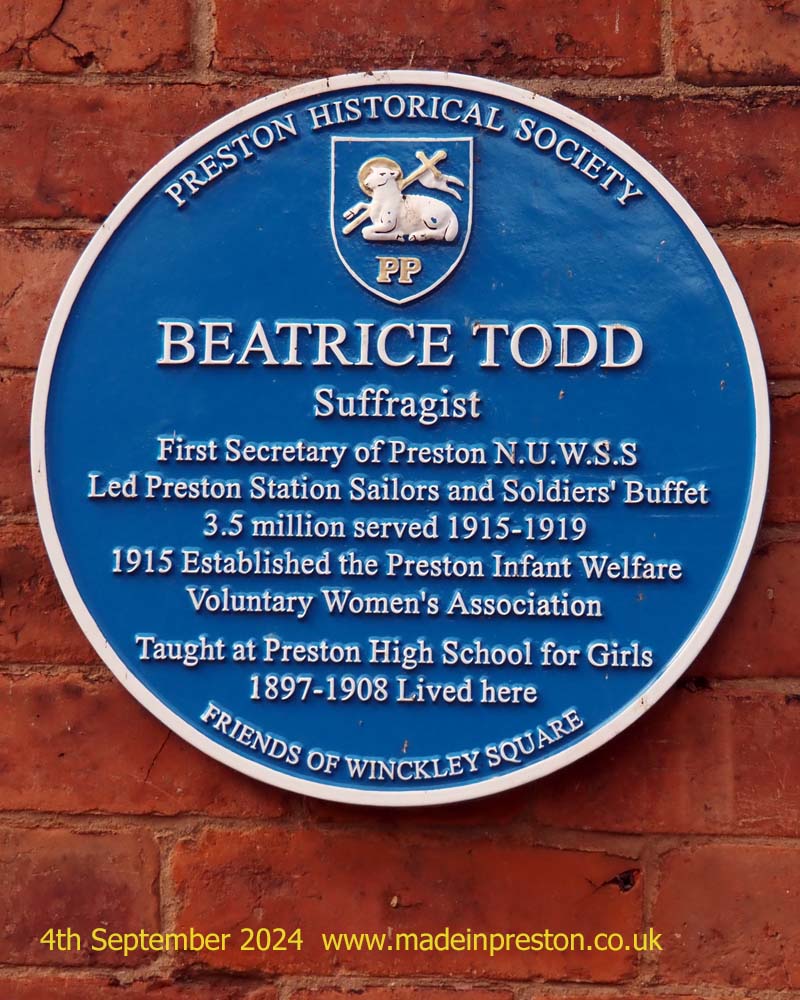Another good walk in Preston: Tram Bridge – Harris Institute – Edith Rigby House – St Wilfrids – Harris Museum – Upper Friargate plus bonus places
The word is on the street is the Old Tram Bridge is gone. Time to check it out.
Heading into Avenham Park, up onto the former East Lancs Railway Bridge, now a footpath. Look left, a space where the Tram Bridge was. There’s a digger creating islands for the work on the new bridge. That’s something, a space, after 200 years.
Looking over the other side we see the West Coast Main Line on the North Union Bridge over the River Ribble.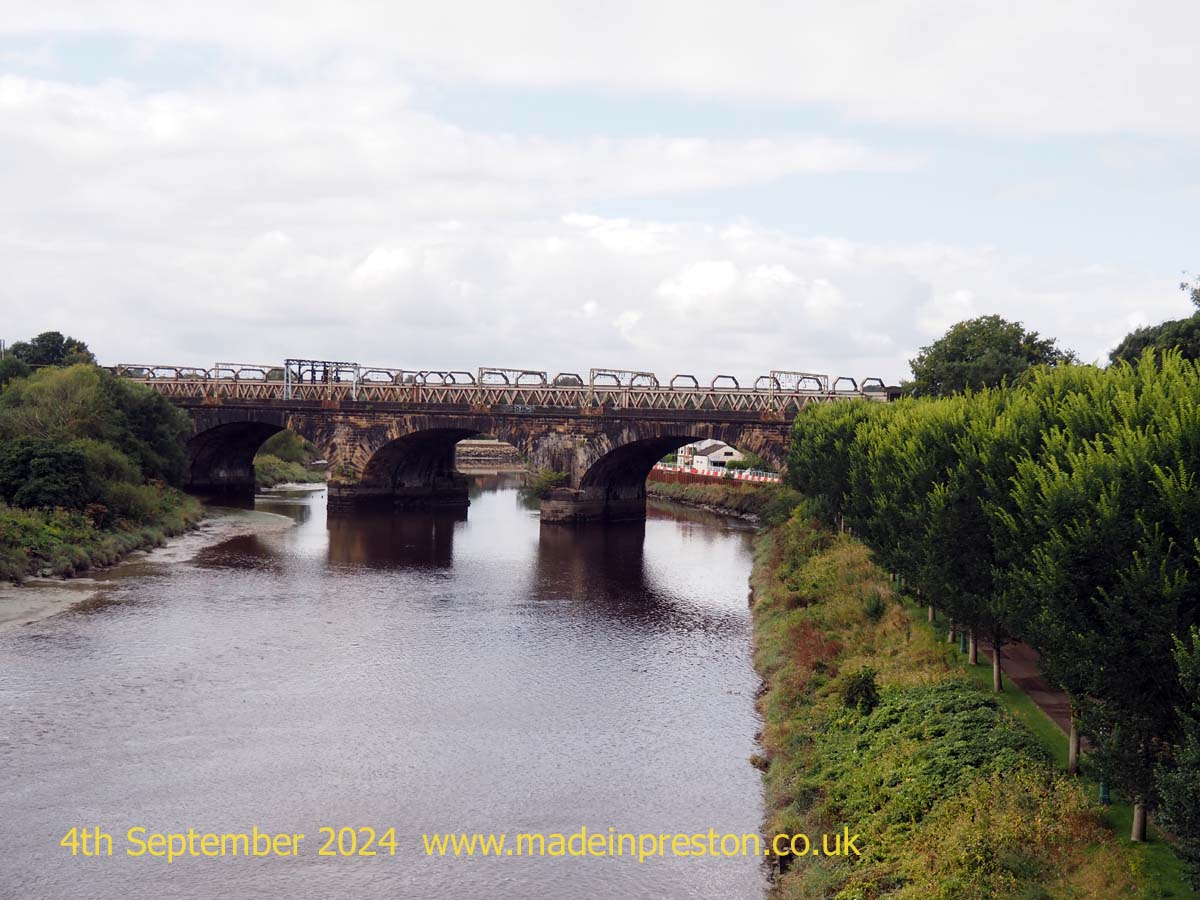
Turning back we see the former Park Hotel ever threatening to be restored. Going straight along the path takes you to a barrier so we turn right and head back down into Avenham Park.
But what happens if we don’t turn back. Skip the next paragraph if you don’t want to know.
It’s good to walk on former railway lines. The track goes towards Bamber Bridge but doesn’t reach there as a footpath. On the way you can turn left to the Capital Centre, or right to Vernon’s Cricket Ground as in Freddie Flintoffs: Fields of Dreams Series 1. You can turn onto the Tram Road and walk back in a triangular track or go further on to Lostock Hall. The rail track passes what was a large gasworks but is now a housing estate before the line comes to Todd Lane. I doubt you can walk past there. It’s years since I walked along there.
Another option is to go down the other side of the bridge to Penwortham. Or go the other way to where the Tram Road bridge works are but can you get past? If you can get past it goes to the Capital Centre or Winery Lane, Walton Le Dale.
Back in the park we walk along the river bank enjoying views of bridges and trees. It’s nice in there.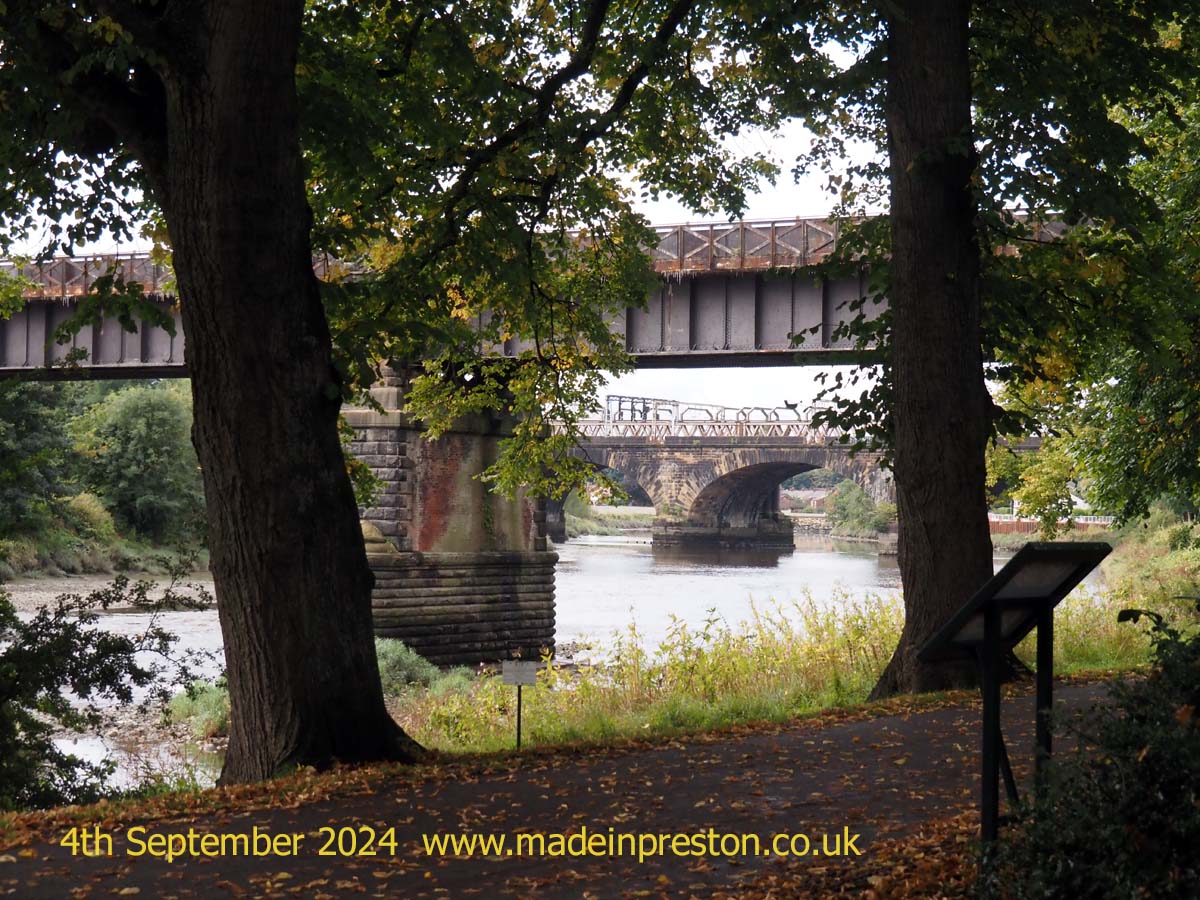
This riverside avenue of trees looks good in all seasons.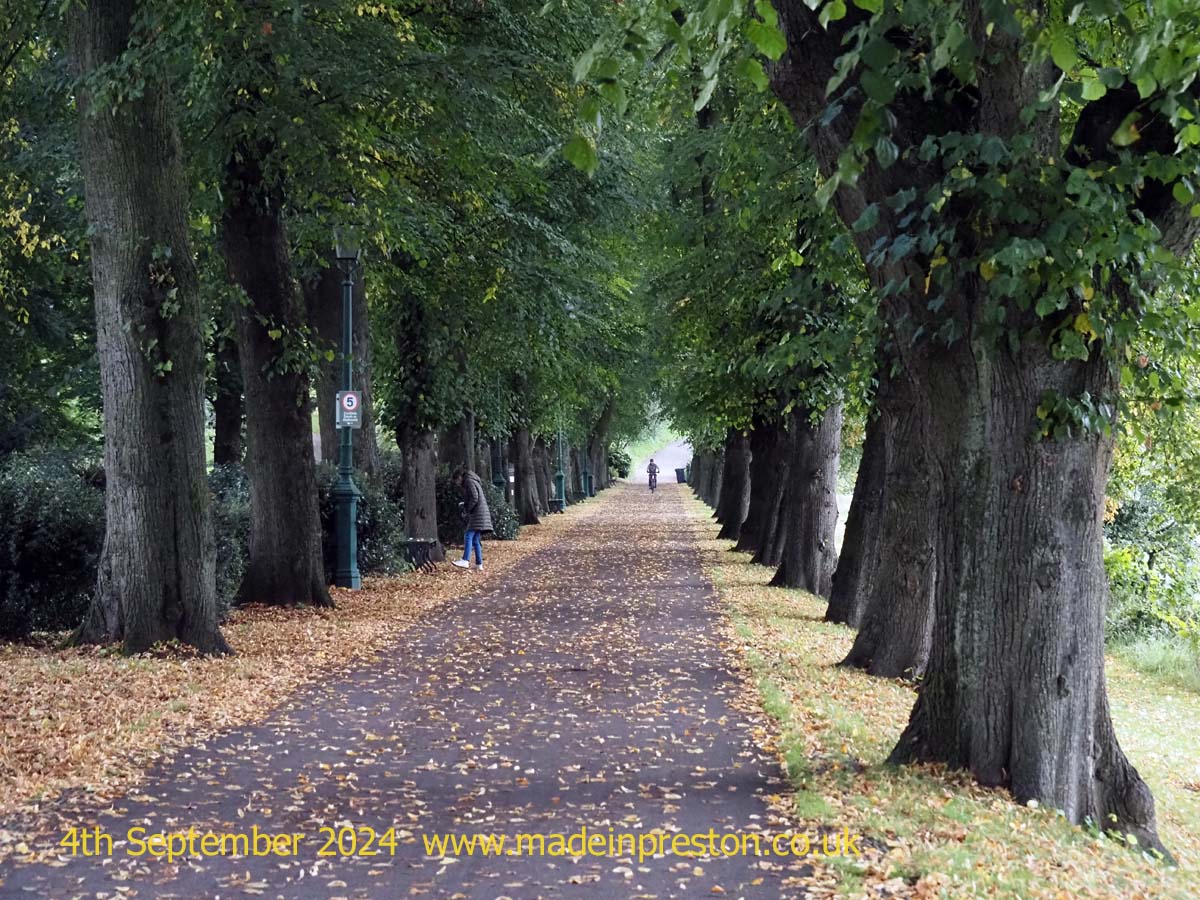
The totem pole which contains a chain to denote the old trams and the steam driven chain that hauled them up the steep bank climbing around 100ft above the bridge. These horse drawn trams(trailers) could carry 2 tons of coal.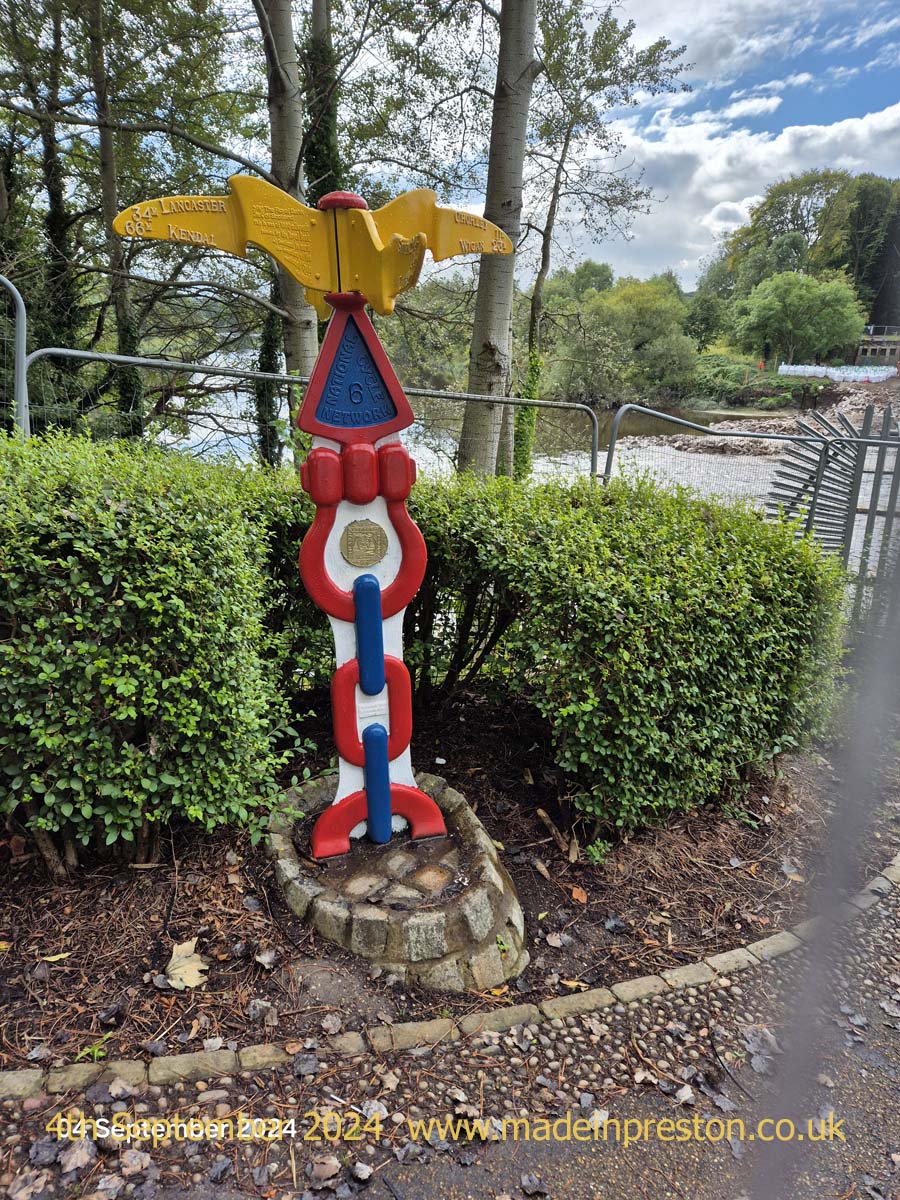
The message ‘Tram Bridge. Reviving history. Reconnecting Preston.
The tram bridge opens walks over the river and along the Tram Road. These trams being horse pulled carts on rails between the Leeds Liverpool Canal and the Lancaster Canal. An aqueduct and locks being too expensive. It was started in the 1790s and operated for about 30yrs dragging coal dug in Wigan sent by barge before being dragged by ‘tram’ to Preston for loading onto a barge for Lancaster and Kendal. This was before the railway came to take over the job. Things don’t stop evolving.
The Old Tram Road was a badly maintained dirt track in the 1960s, capable of taking a car if essential. Trains were still running from Blackburn(and further east) and Liverpool over the East Lancs Bridge and track. That route closed to passengers from Bamber Bridge to Preston in 1968 and Todd Lane Junction station closed.
The gasworks would be fired by coal and produced coke and gas. By the time the line closed it was fired by Fuel oil which was shipped by rail for many years until North Sea gas came along and closed the site. Every gas cooker in Britain had to be converted to burn North Sea gas instead of Town Gas. The gasworks lasted from around 1924 to 1970. I used to be able to see the gasometers going up and down across the fields from our back window. The giant gasometers are gone all over Britain.
Here’s a better shot of the former bridge stands in the river and at the far side the first of the workers islands. The new bridge is covered in a previous post on this blog.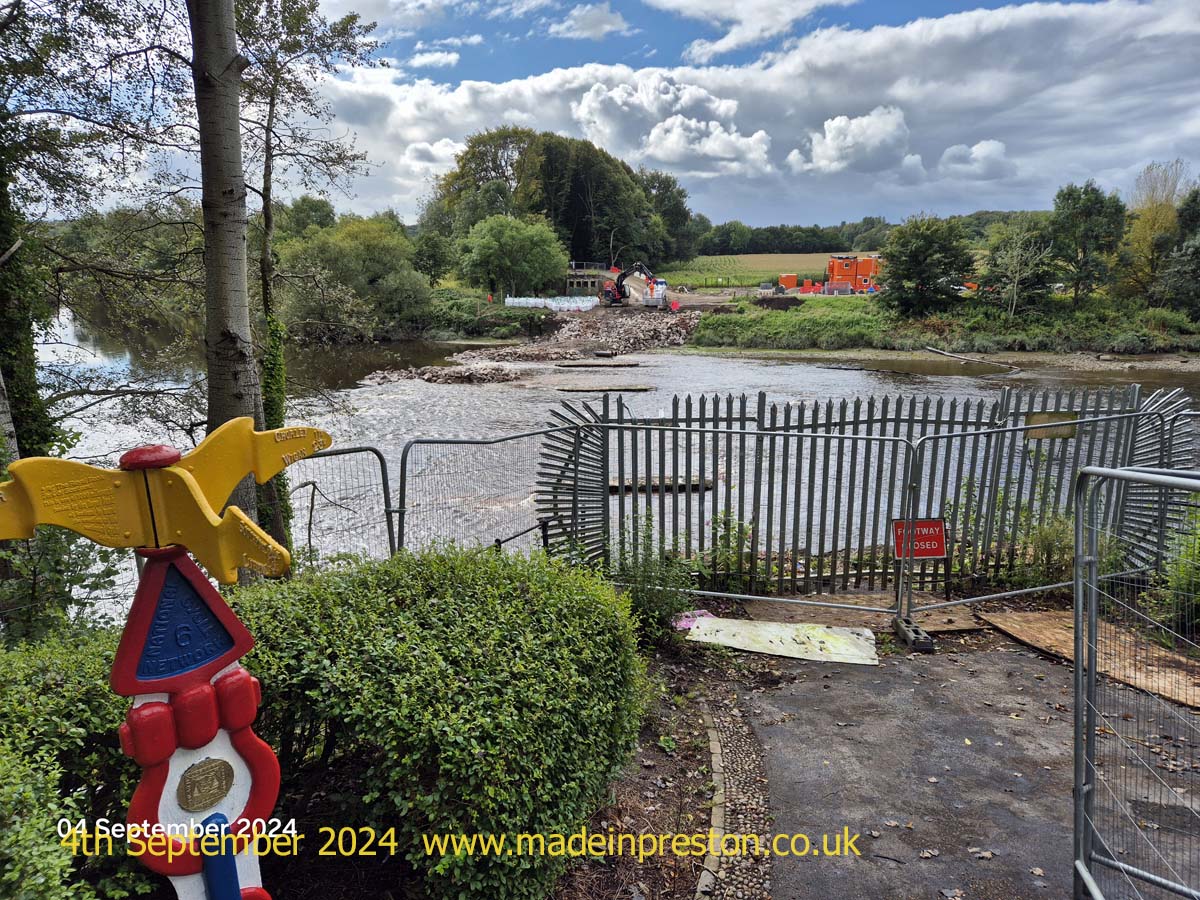
Moving on, instead of going up the steep former tram road go a bit further on and see the cannons from Sebastopol on either side of the steps.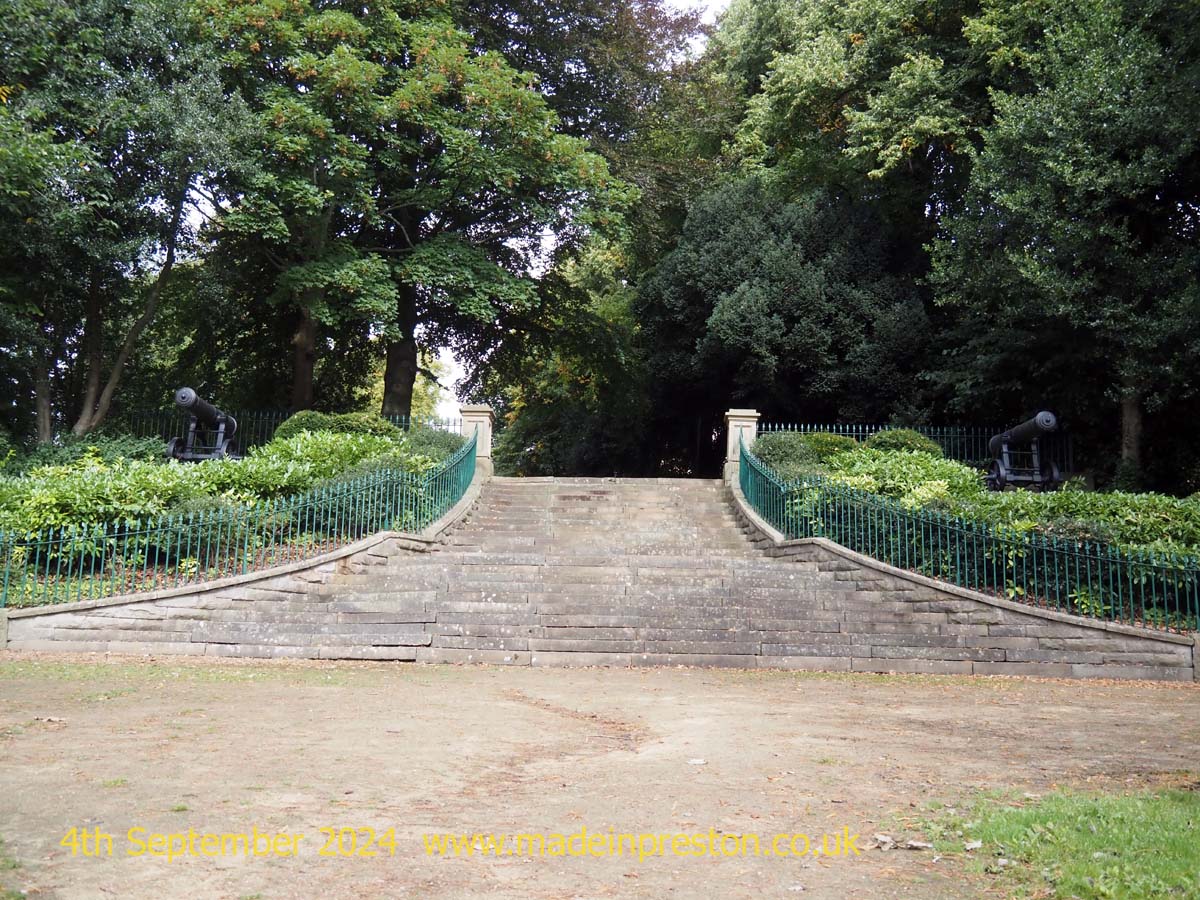
Then up to the promenade and the tower building, now flats, maybe apartments.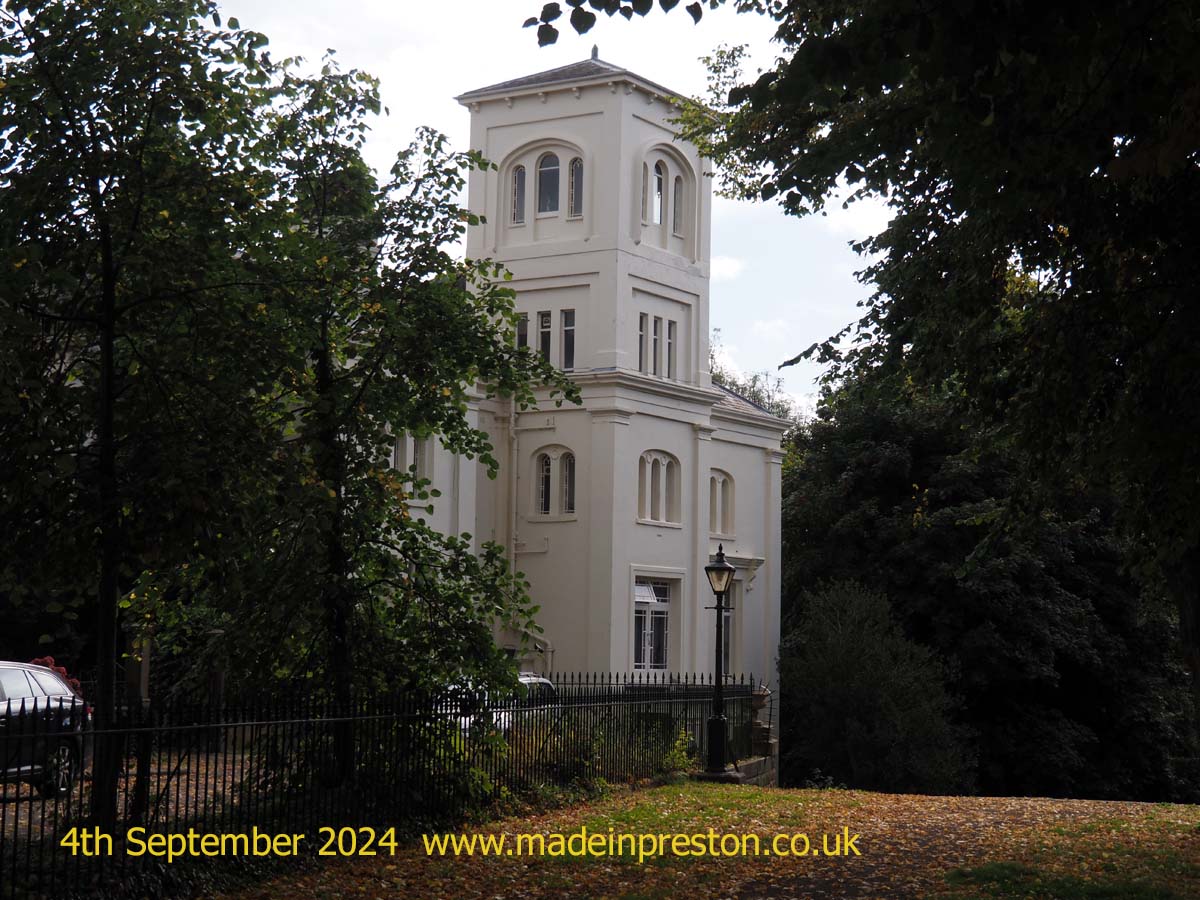
Halfway along the promenade some interesting looking houses down a side street to the right. Enjoy the architecture.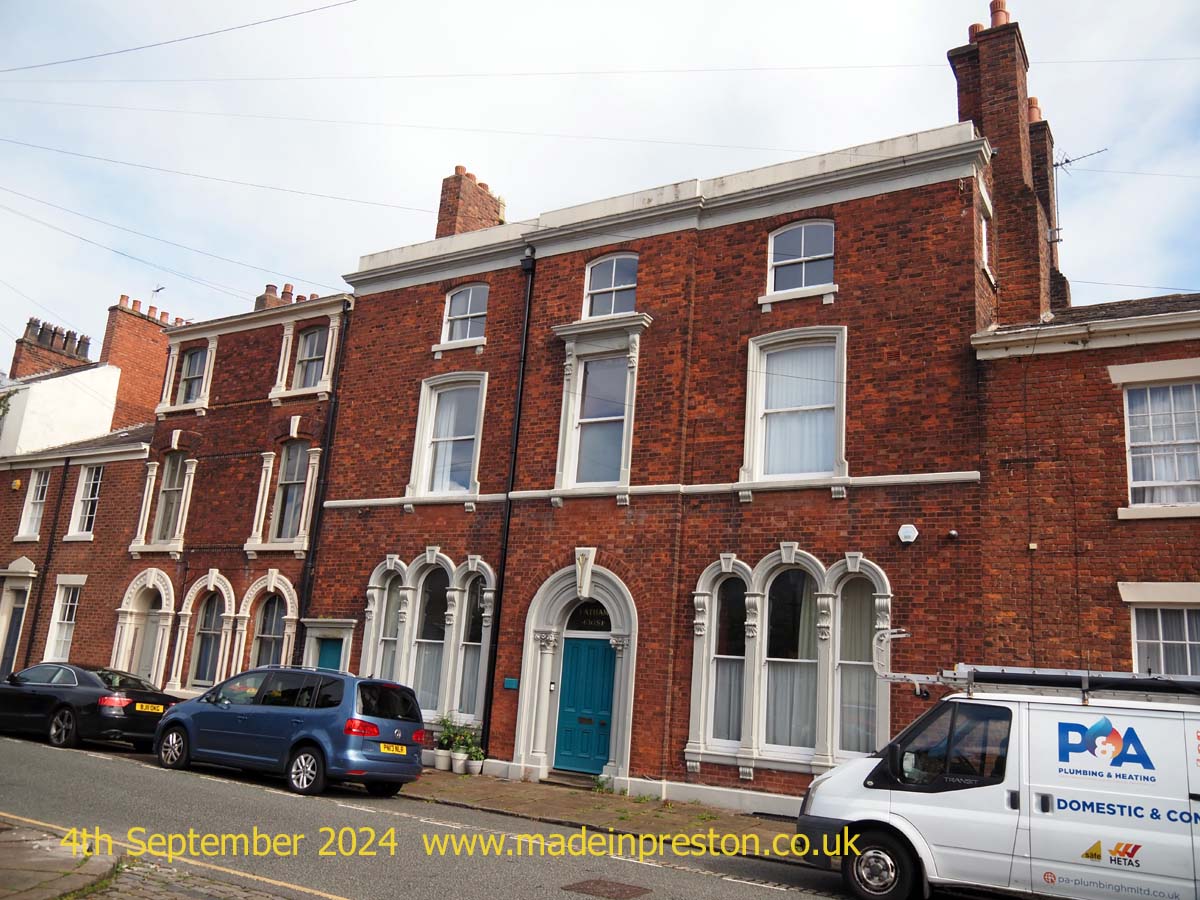
The Harris Institute. A fine building pending another proposal for use. At this point Avenham Lane changes to Ribblesdale Place a formerly affluent area, now mainly offices.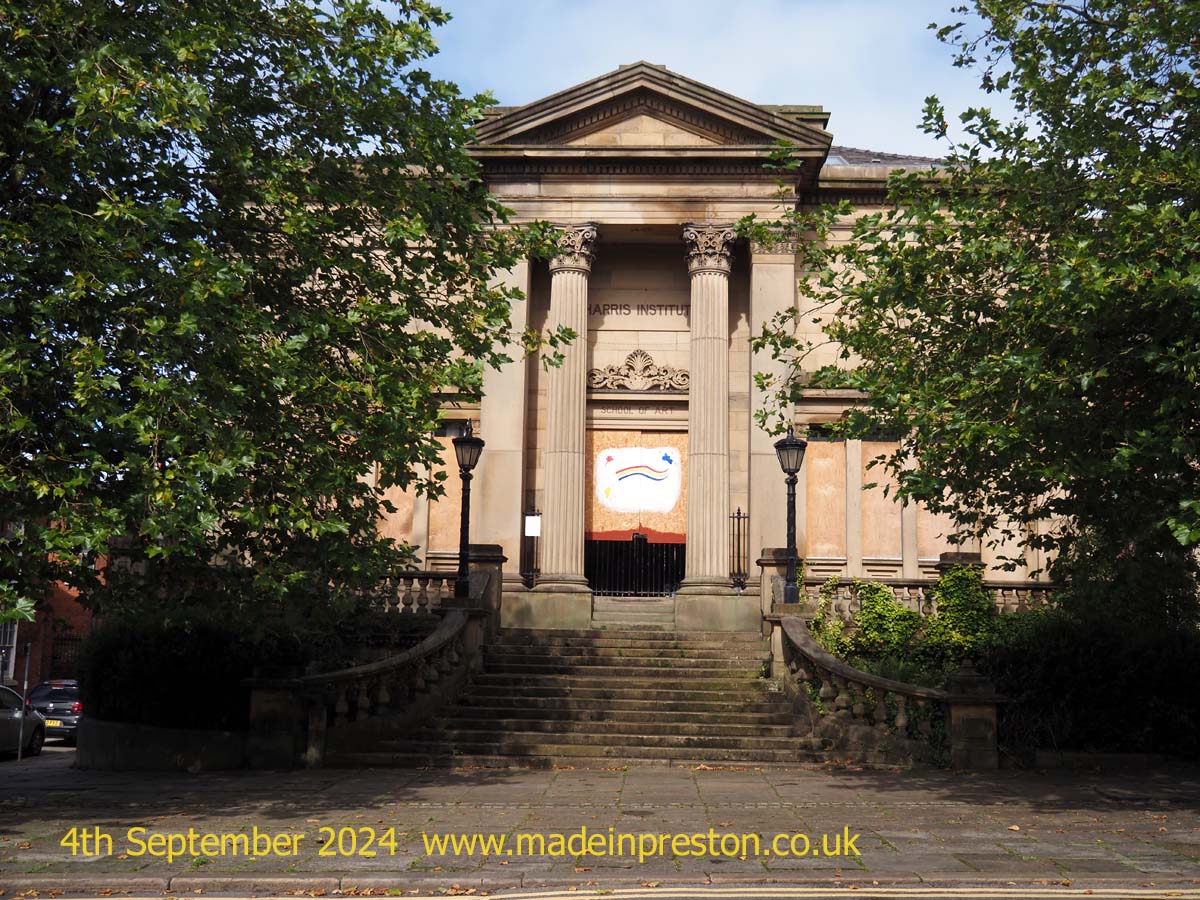
Ribblesdale Place. A road with some fine houses overlooking the park at the back.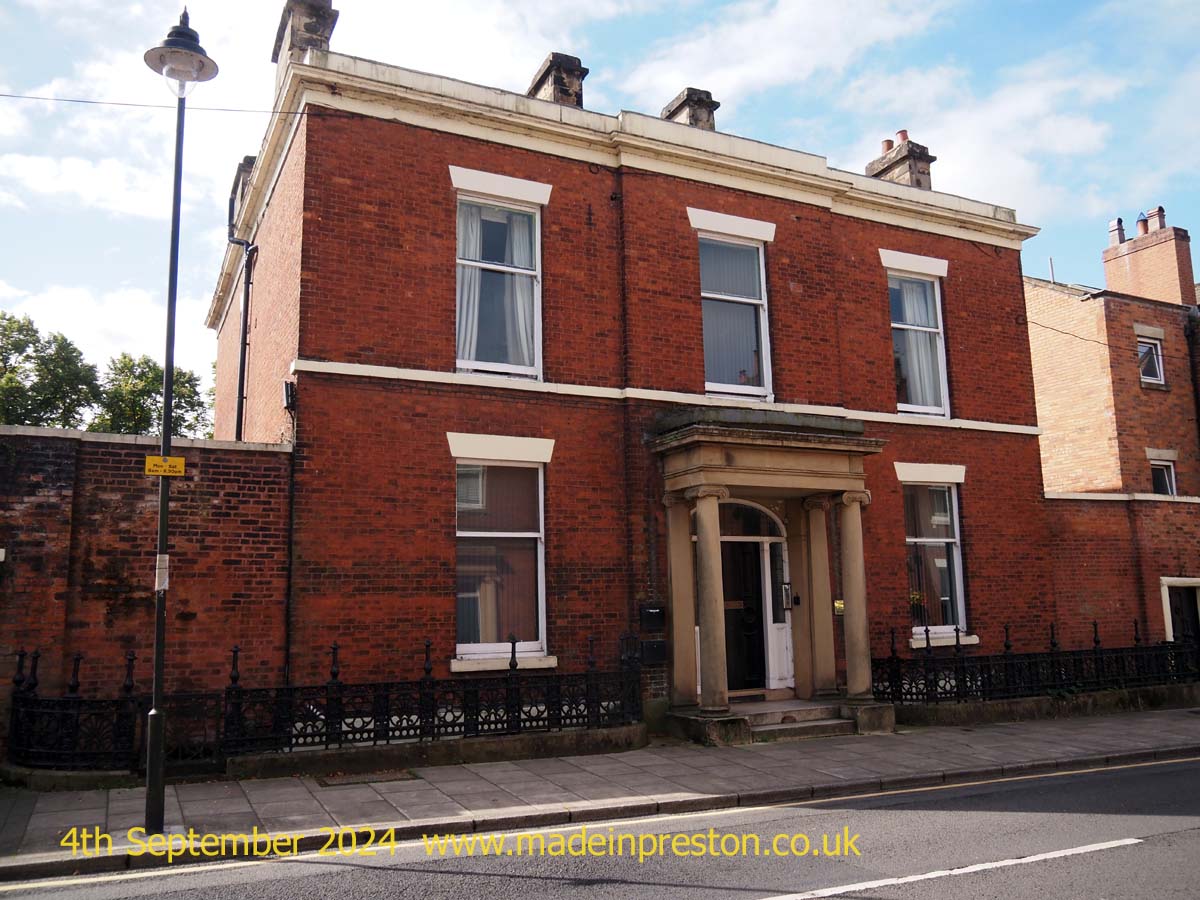
Ribblesdale Place. The house of the Rev Harris whose son was benefactor the Harris Museum.
The Blue Plaque for the Rev Robert Harris and his son Edmund on the building they lived in at the gates of Avenham Park. Edmund being the benefactor of the Harris buildings in Preston.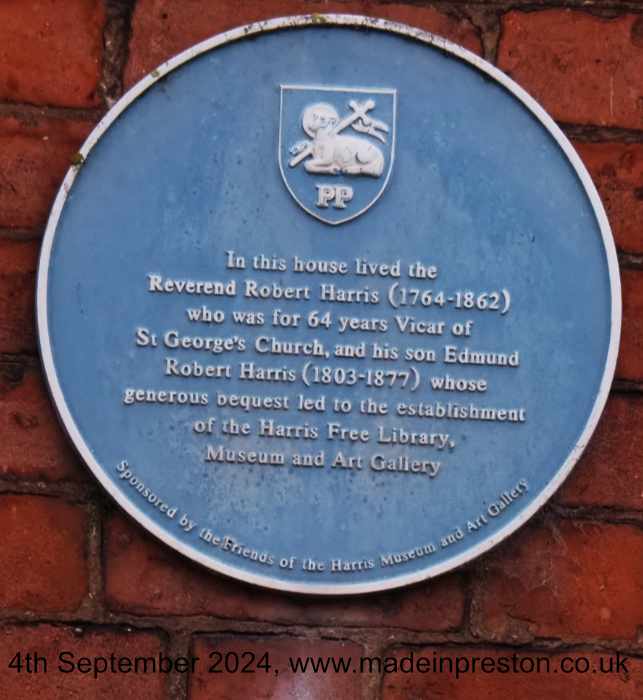
On to Winckley Square, Chapel Street. The house of Edith Rigby proposed for a museum to commemorate the Women’s Movement. See the Blue Plaque below.
Blue Plaque in Preston. Edith Rigby. Suffragette. Secretary of Preston Branch Women’s Social and Political Union.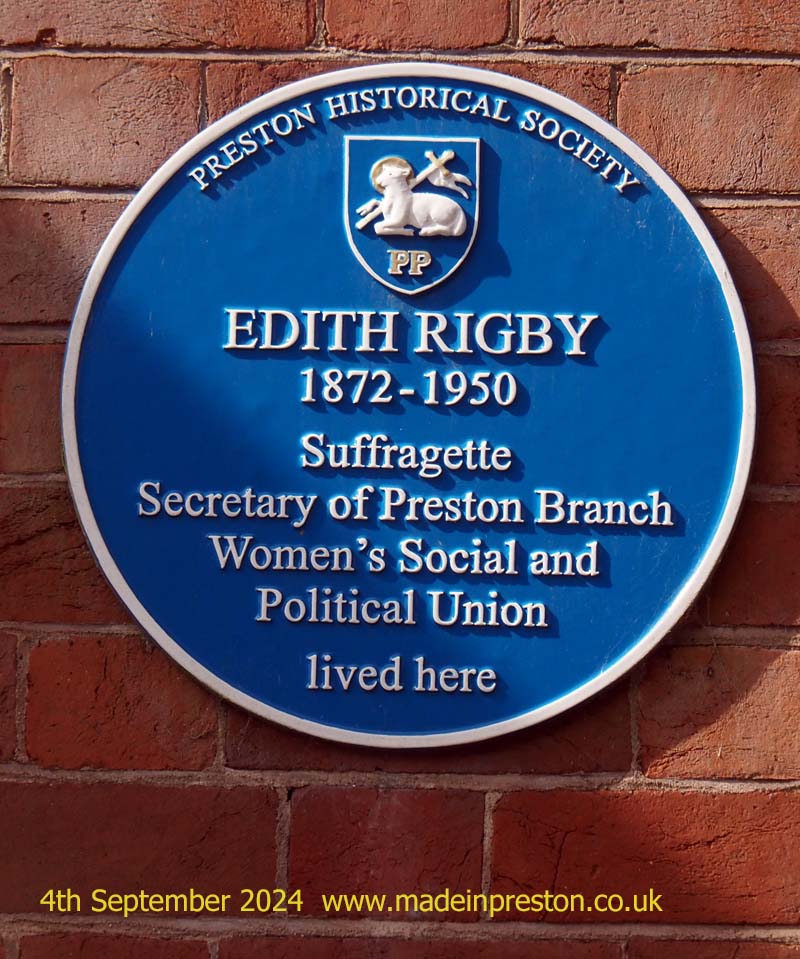
This building looks good in the September sun. The next building is the site of the Preston Catholic College which was the Catholic Grammar School in the not too distant past. 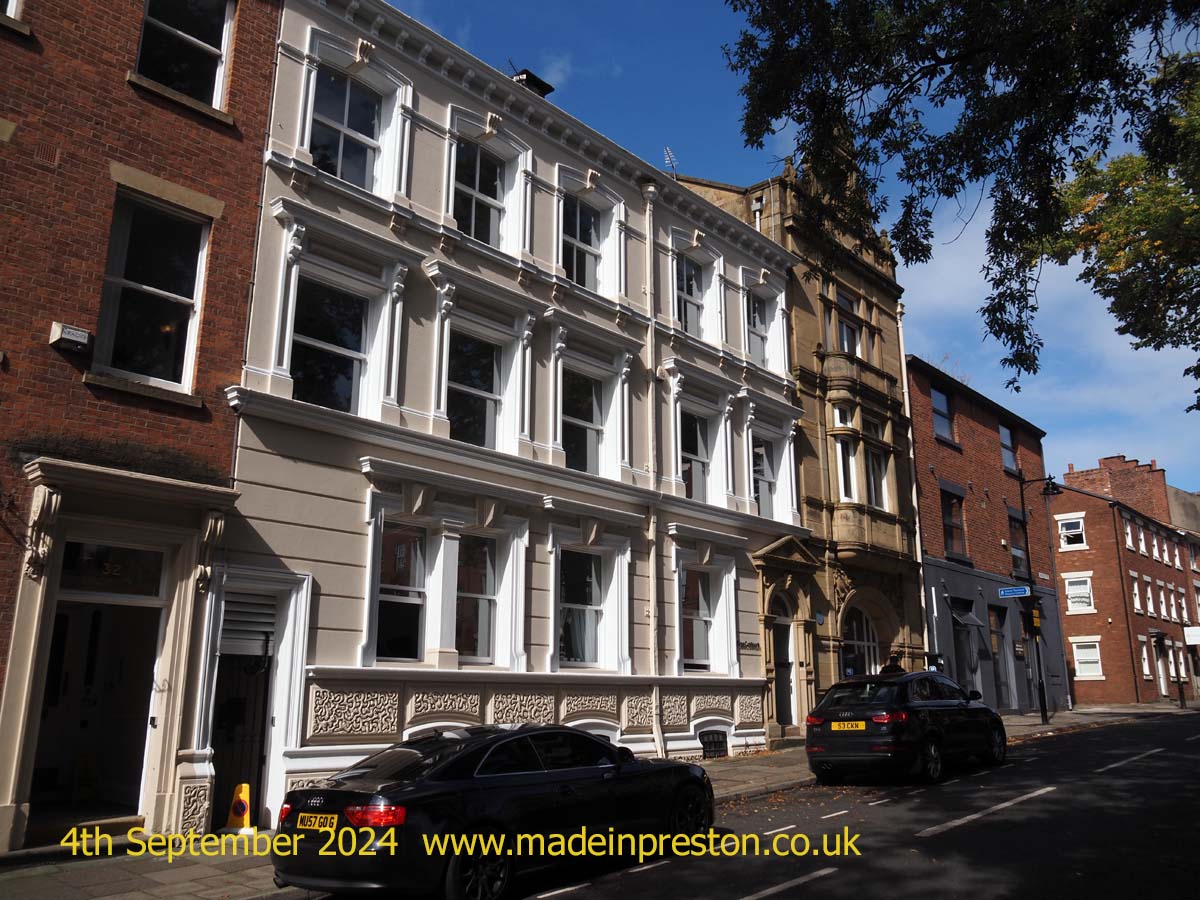
St Wilfrid’s Church. Roman Catholic across the road from the former Catholic College. It’s interior is finer than its exterior. Going into churches in Preston wasn’t something I did but lately there’s been two firsts, both exceeding expectations.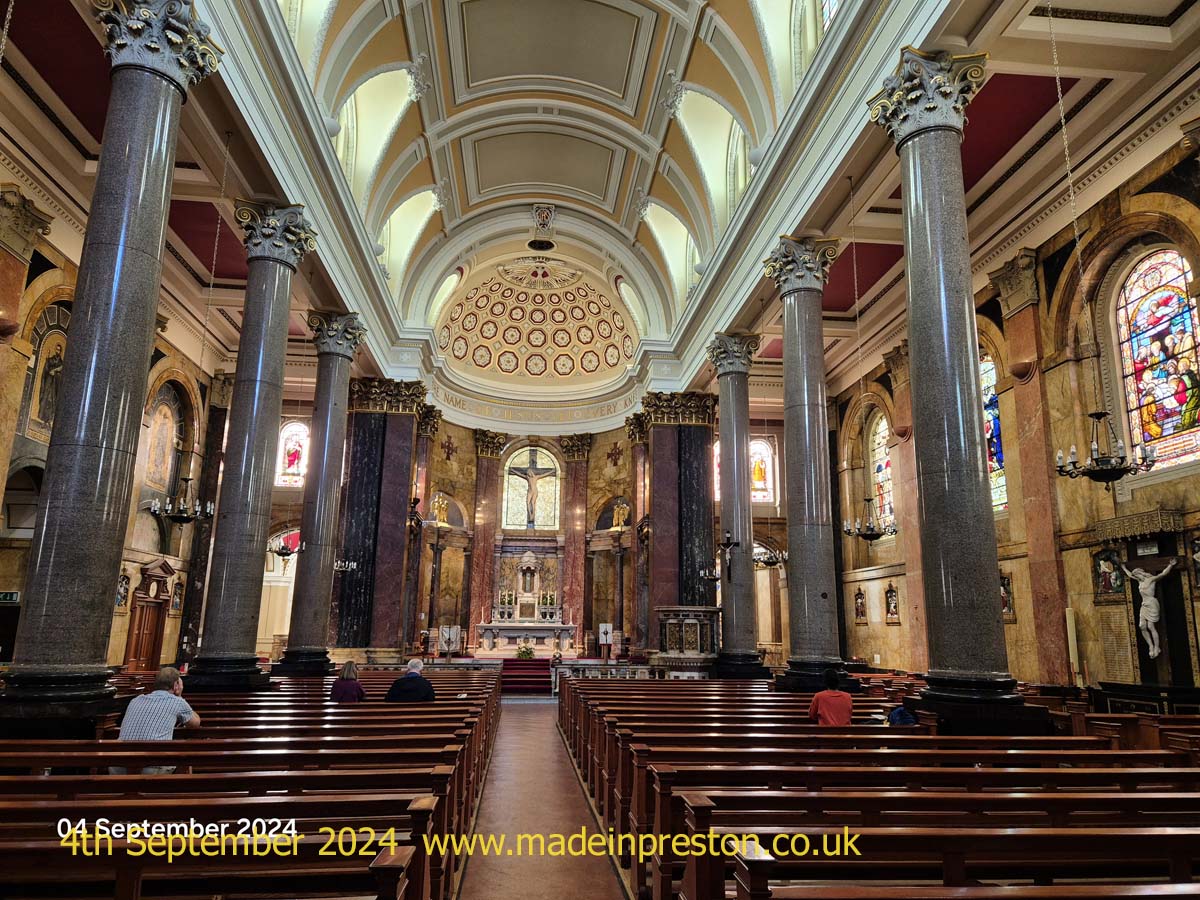
On Winckley Square north side is the former house of Thomas Miller, mill owner and one of the benefactors of Miller Park. See the Blue Plaque below.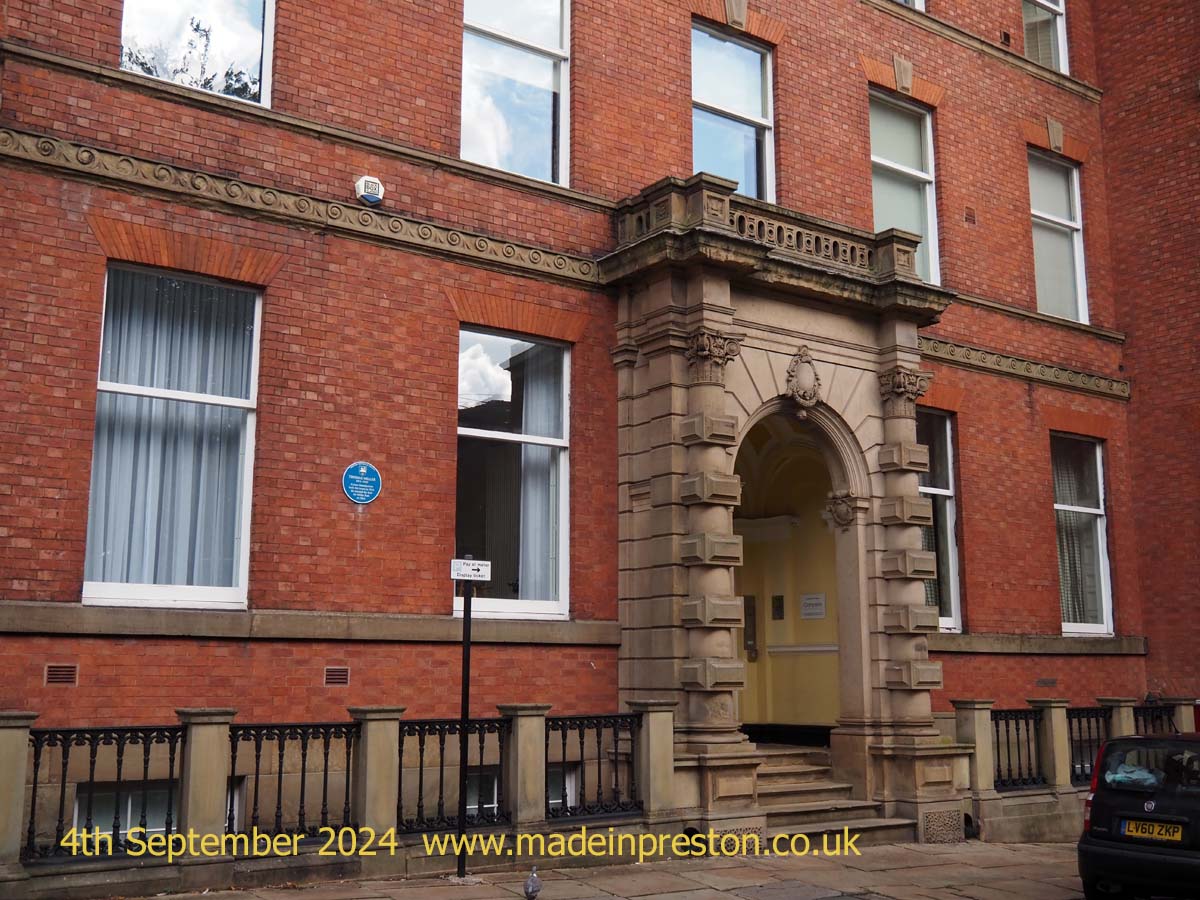
On the south side just beyond Winckley Square is another house of a Women’s Movement lady, Beatrice Todd. Blue Plaque below.
Read more about Winckley Square on our website. Click here
In Glovers Court leading to Fishergate is the Wellington pub. It looks better now than it did. Formerly it was very popular with teenagers in the 1960’s as the Beachcomber club was at the Fishergate end. 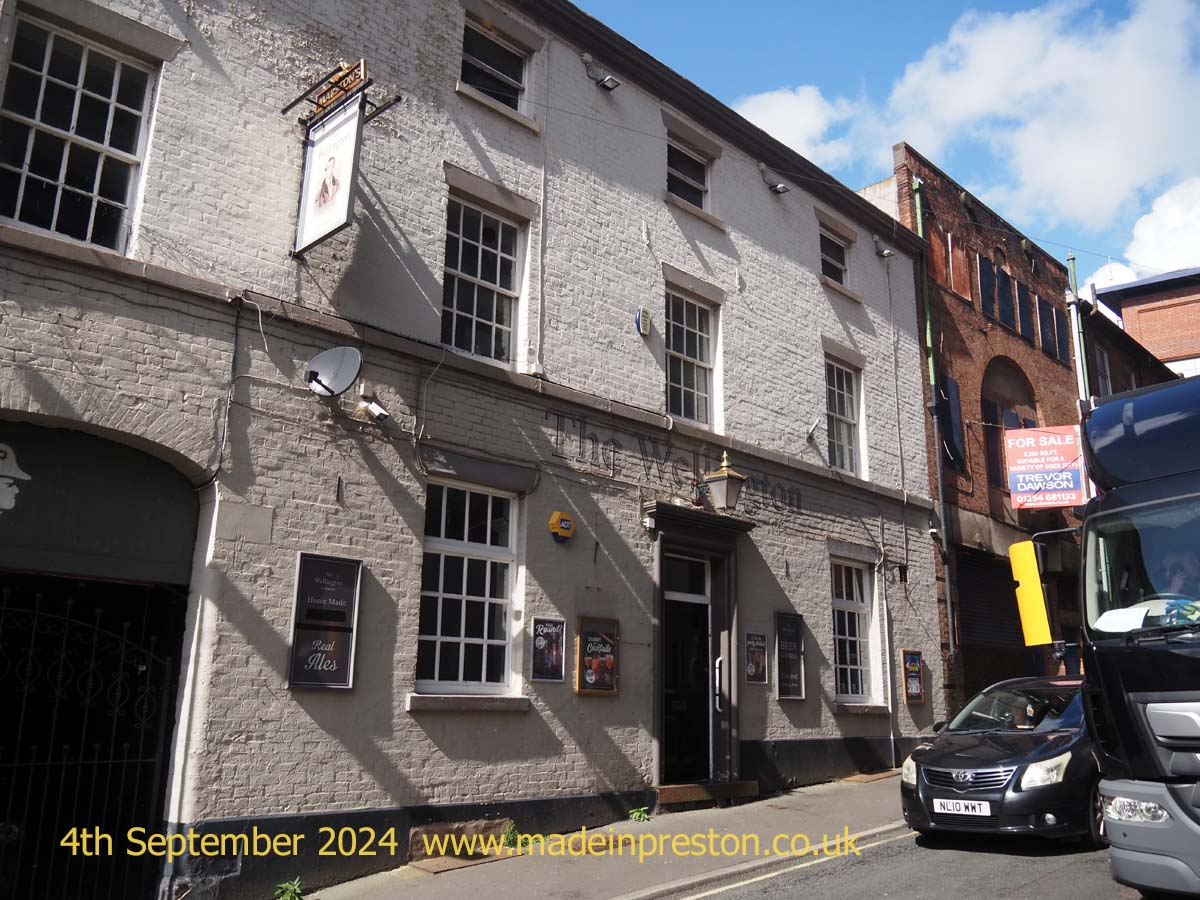
Booth’s clock bridge on Glovers Court. On the left upstairs used to be a high class fashion shop whose name escapes me. 1960/70’s.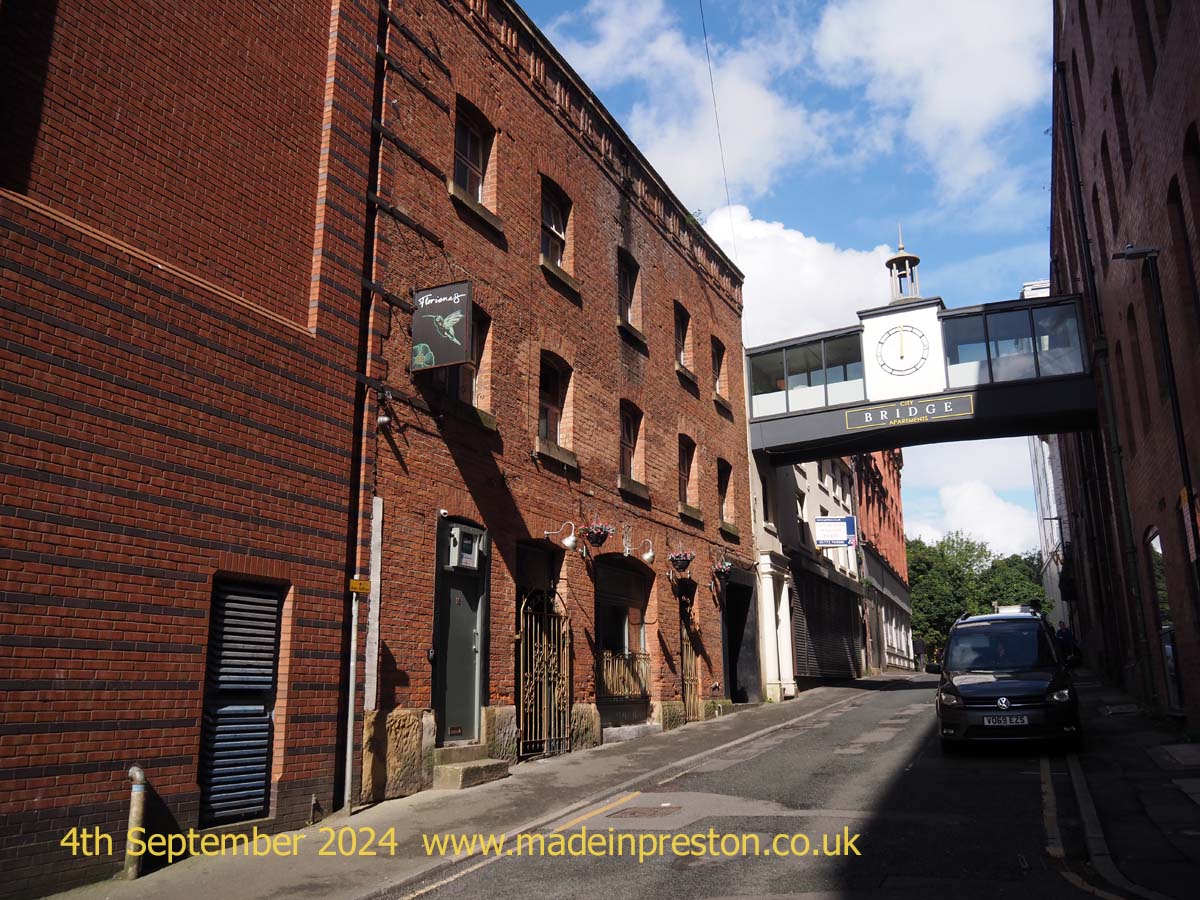
A view along Fishergate the main shopping street in Preston. The banner is for BBC Radio 2 in theP ark. Held in Preston from Friday to Sunday 6th to 8th Septembe 2024. A successful event with big audiences on Moor Park, to the north, and good weather until Sunday when it rained, as it did all over the UK.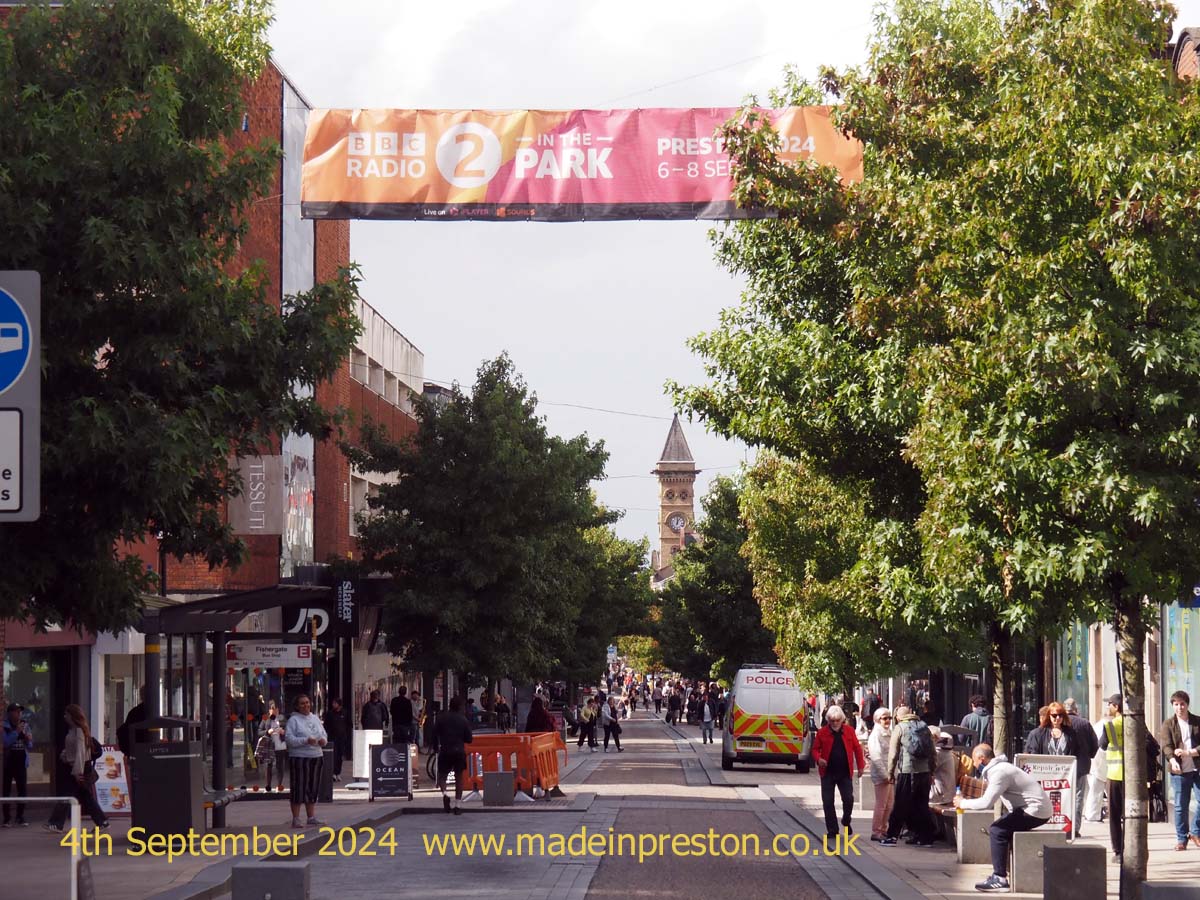
The Harris Museum awaiting re-opening in early 2025. The announcement this week that a major supplier of the update has gone into administration puts a chunk of funding at risk as well as the opening date. Although we can only wait to learn what the administrator and council does.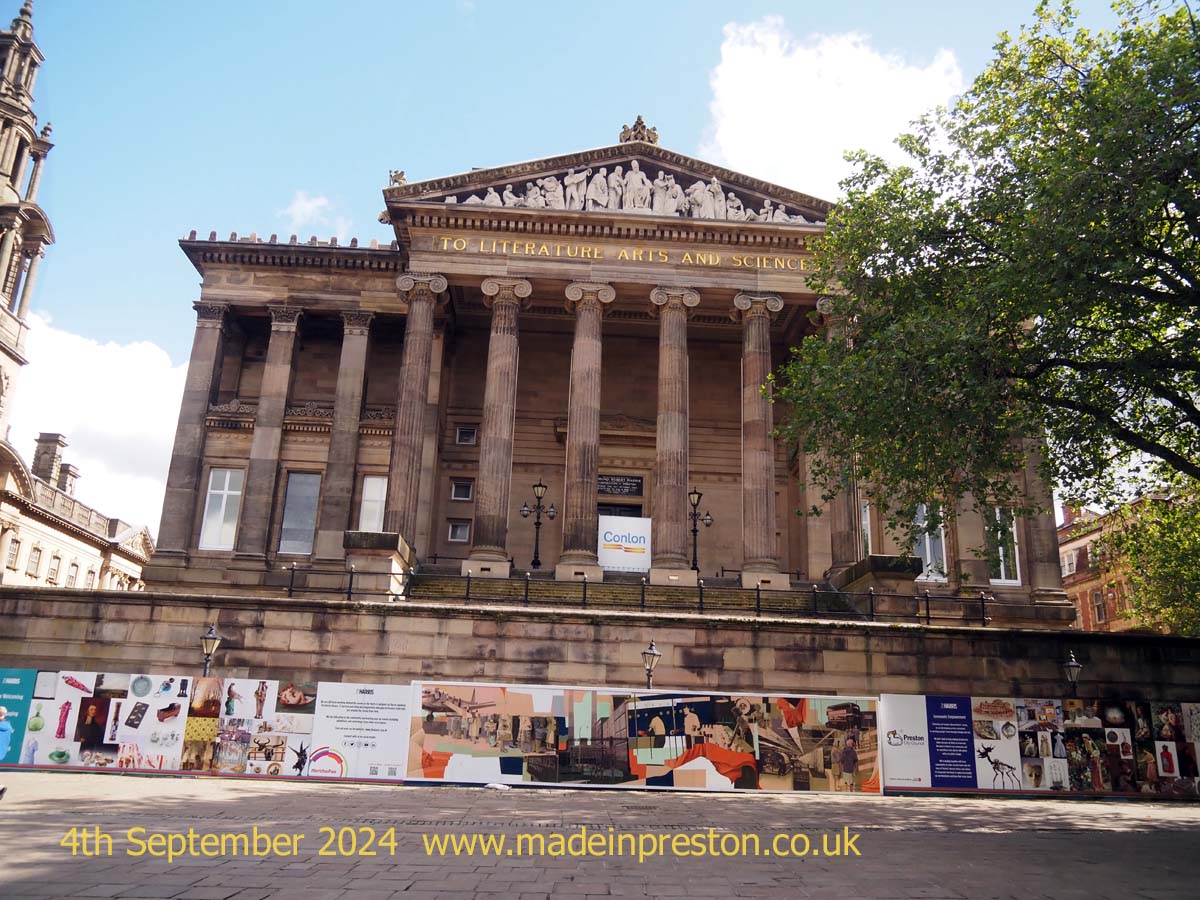
The best built view in Preston.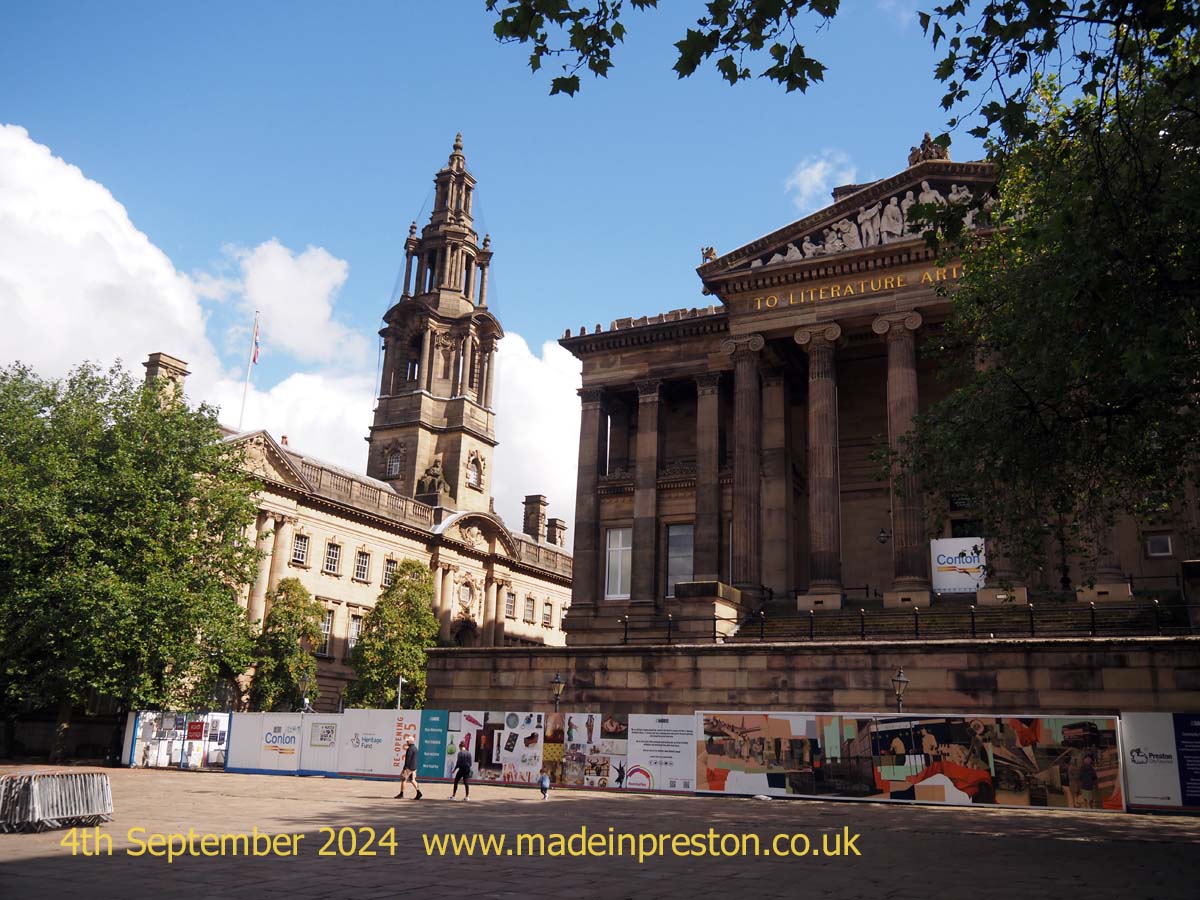
Read more about the Harris Museum, Art Gallery and Library on our website. Click here
Another project on hold is the old post office conversion. Plans for a hotel are on hold.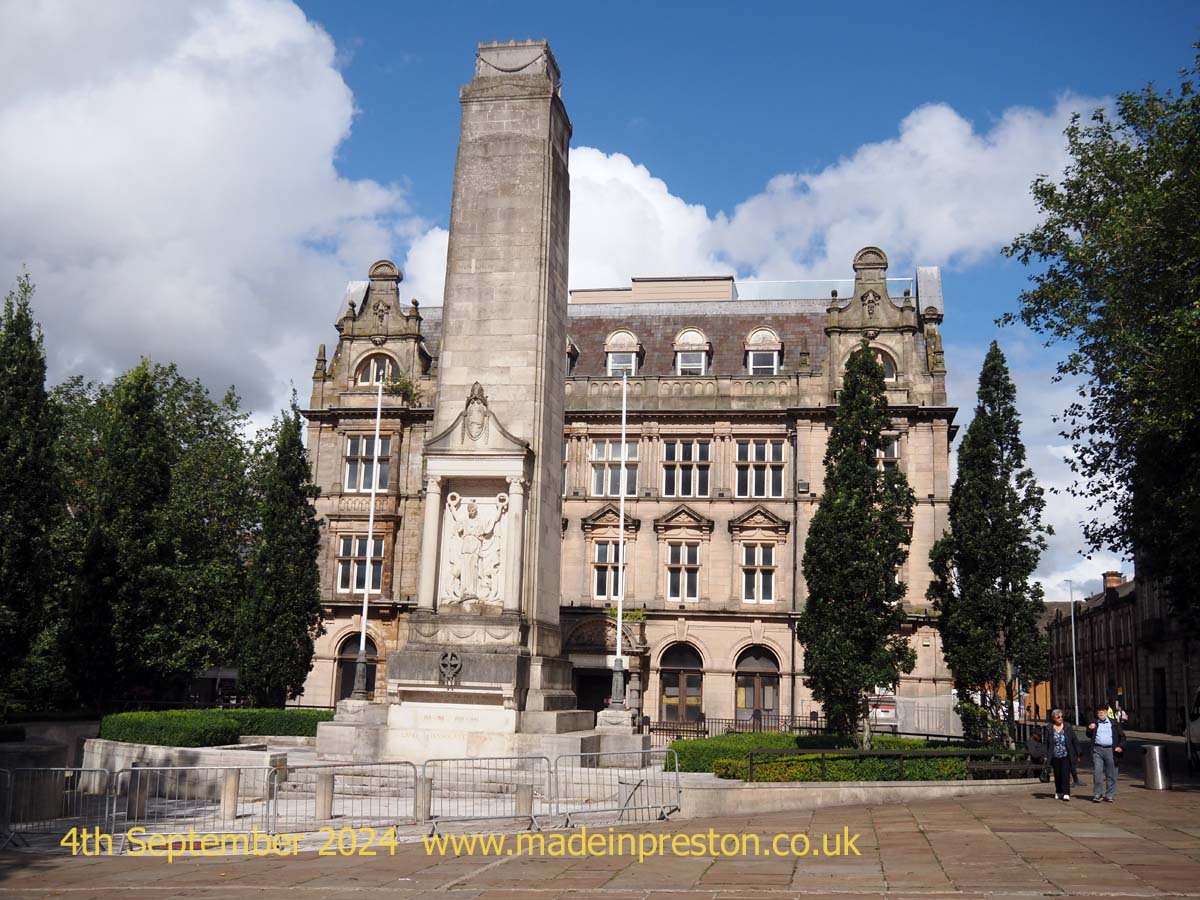
Continuing into Friargate just on the left is the former Boars Head pub looking tired. This was a popular pub.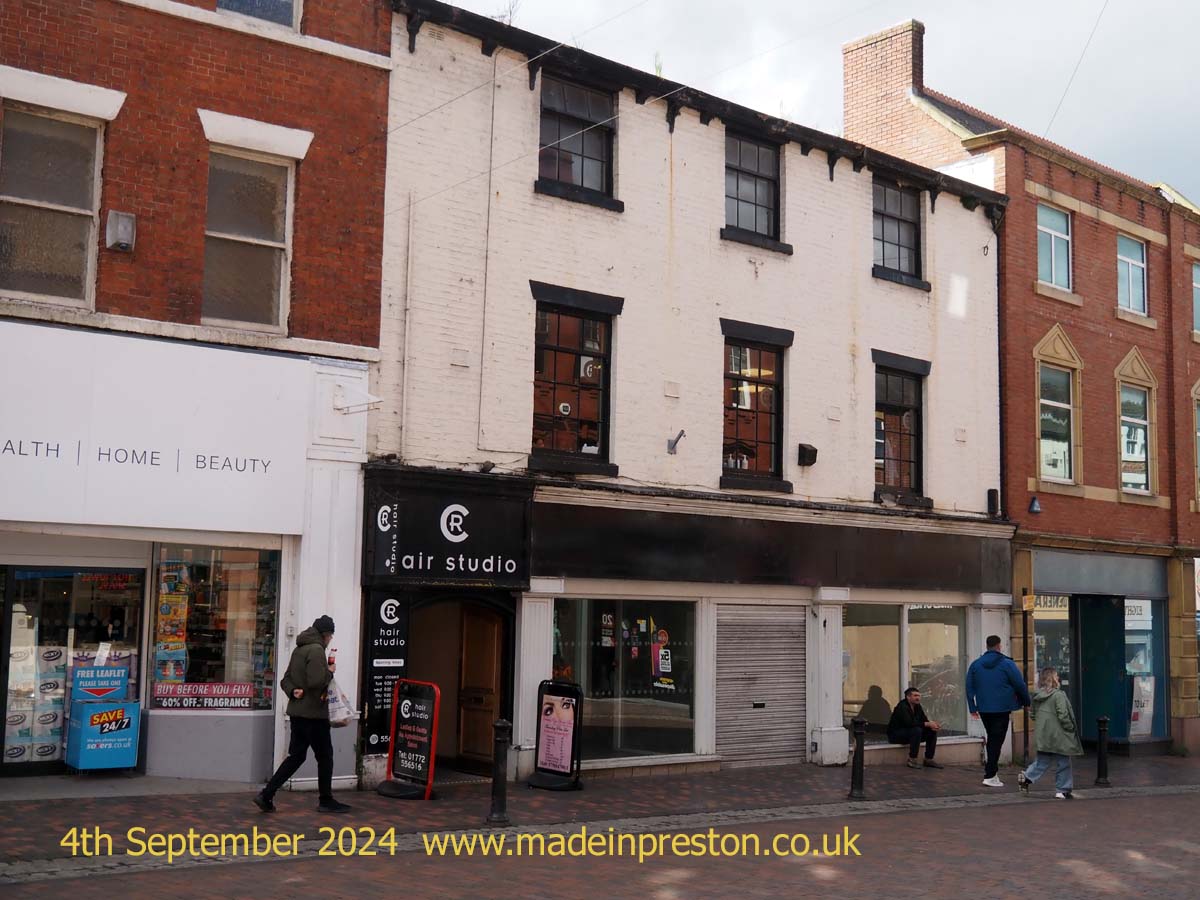
The Black Horse pub has an interesting interior. It had an old chap with a moustache and a white jacket who waited on in the late 60s.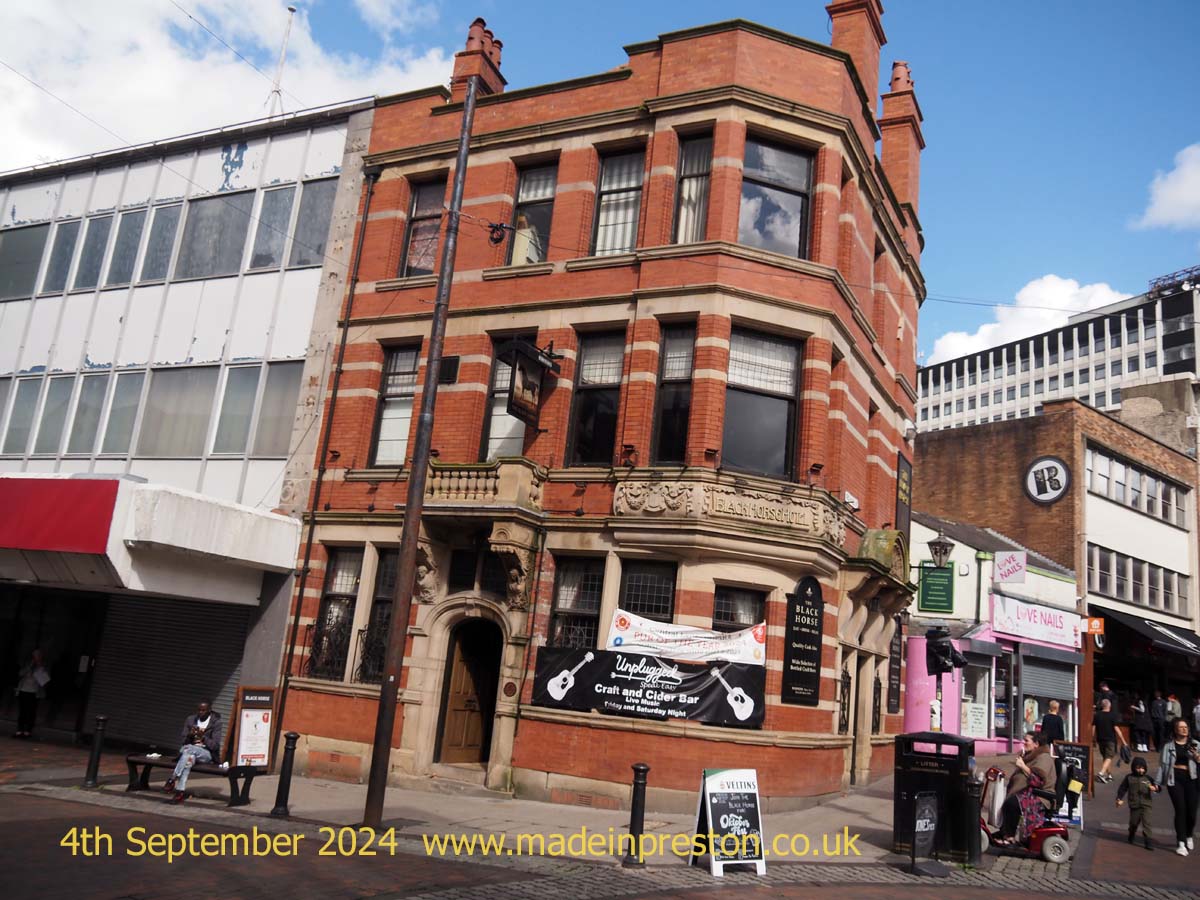
The Methodist Church on Lune Street. Venue for Preston Historical Society meetings.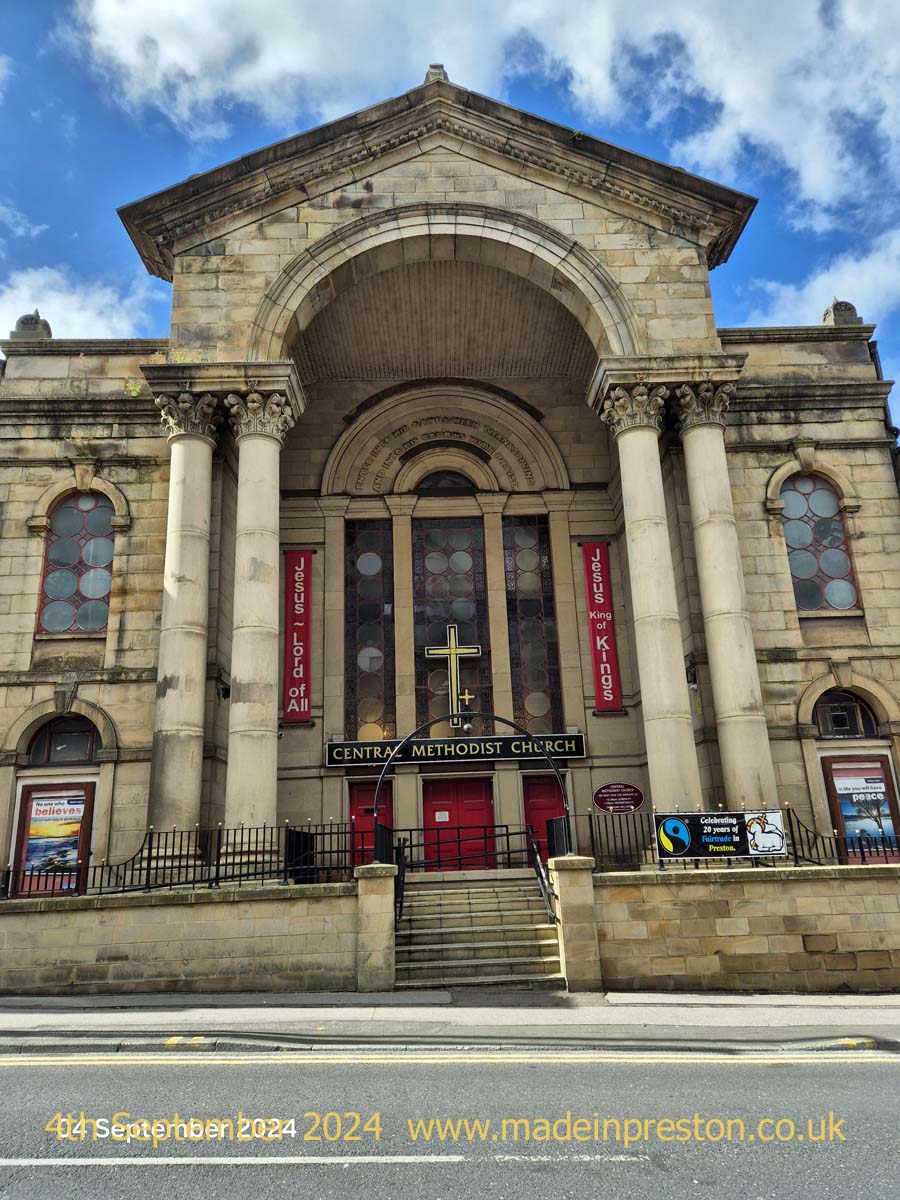
The Old Vic across from the Railway Station. Next door is Rise a nice coffee place and sister to the one in the Miller Arcade which also offers food.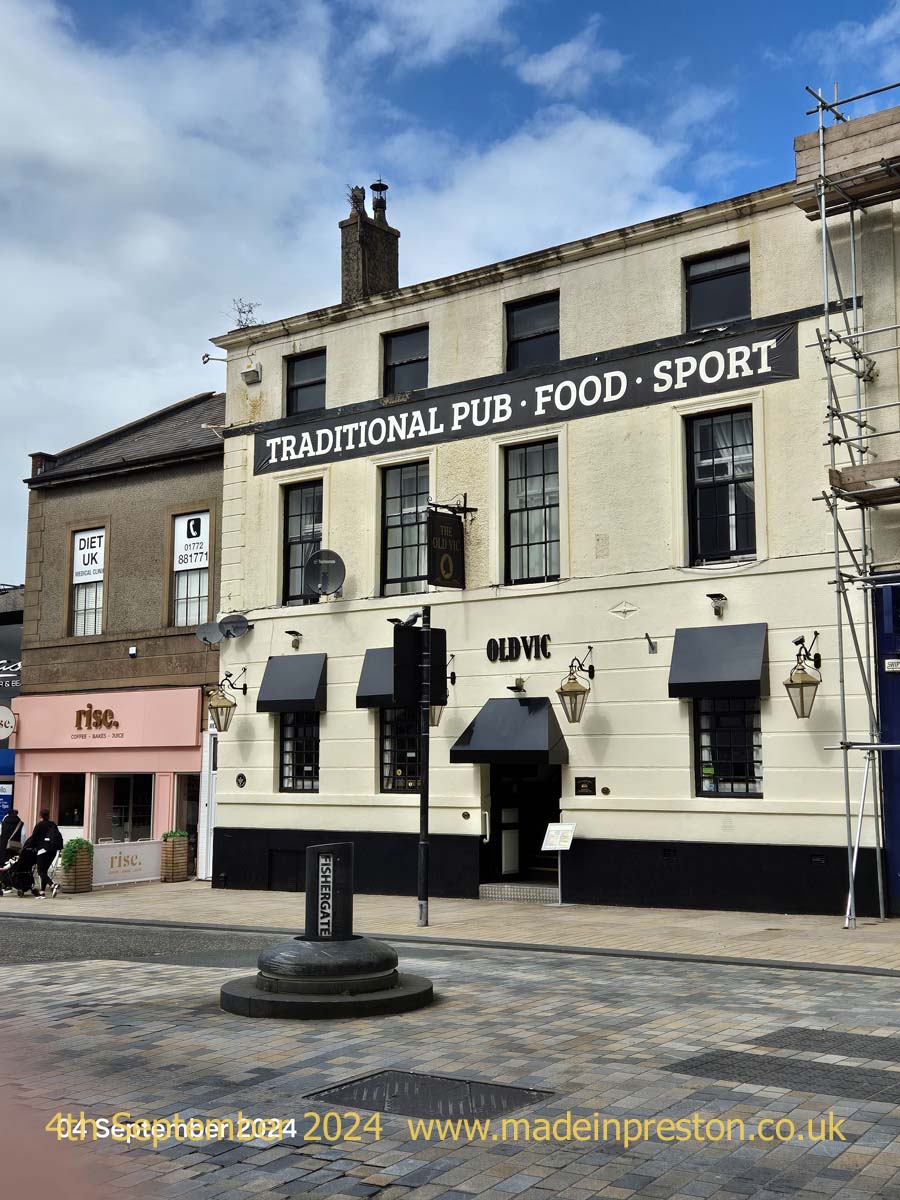
Preston Railway Station from Butler Street. It’s good that Preston kept the prestige of having a real fully covered railway station when all the other towns in Lancashire had their’s knocked down and replaced with large bus type shelters. Perhaps that helped give Preston city status. That and the astounding bus station.
That was a good walk, very enjoyable and thought and memory provoking. Preston has many layers of history and still moves on powered largely by UCLan and payments from students and their demands for youthful life. Keep that youthful life and keep walking.
Read more about the Railways around Preston and the Tram Road on our website. Click here.

